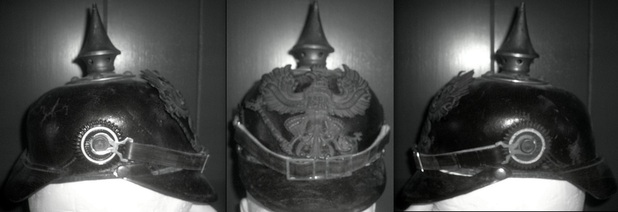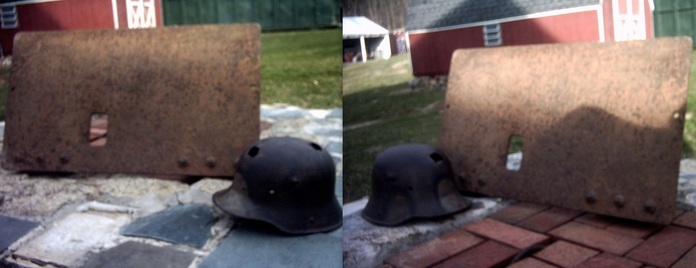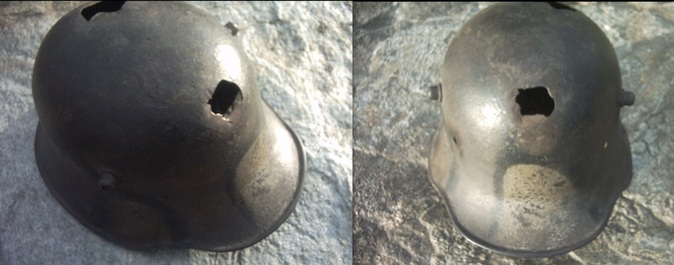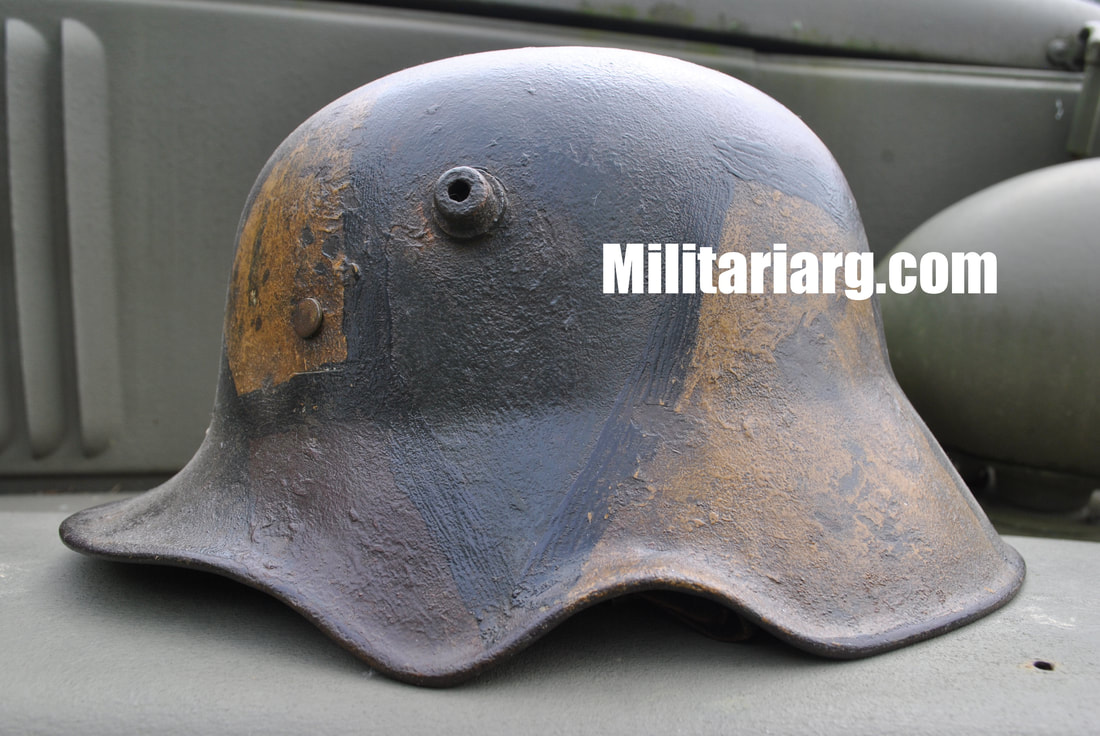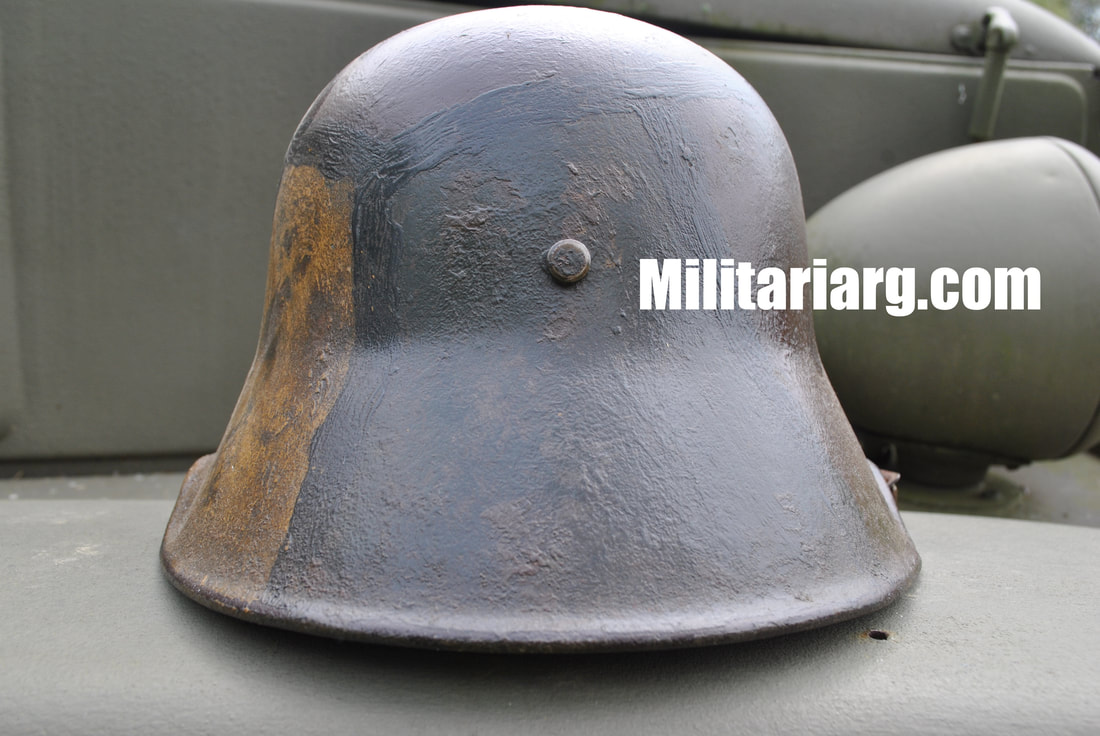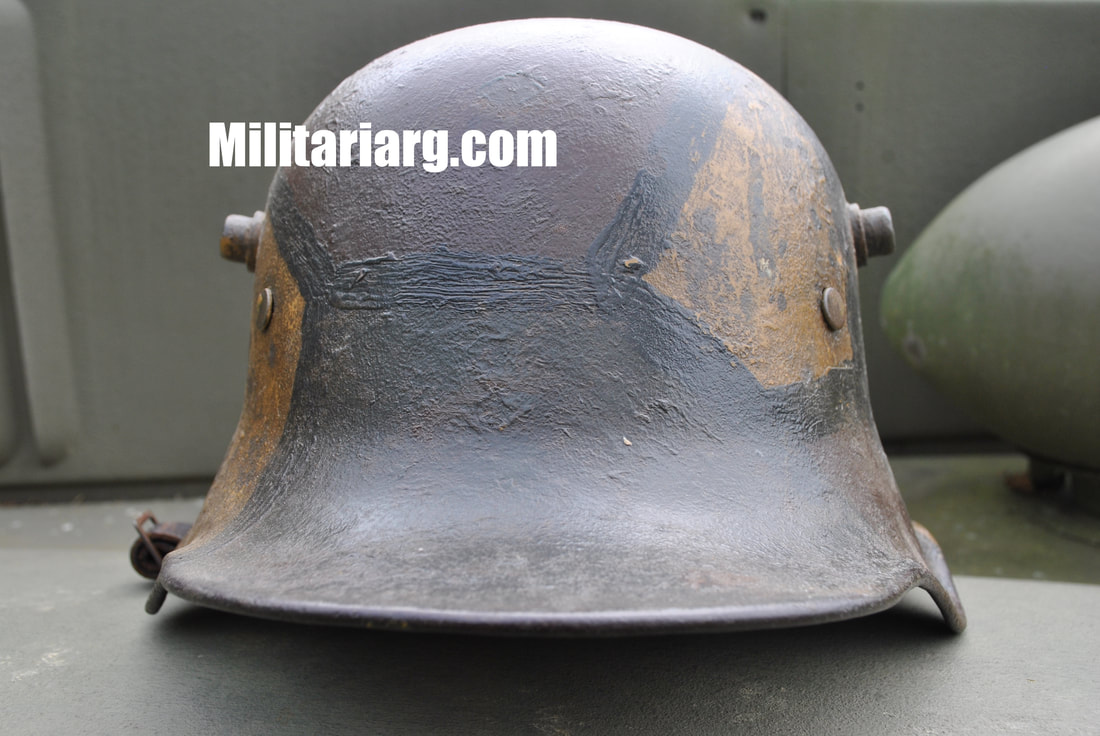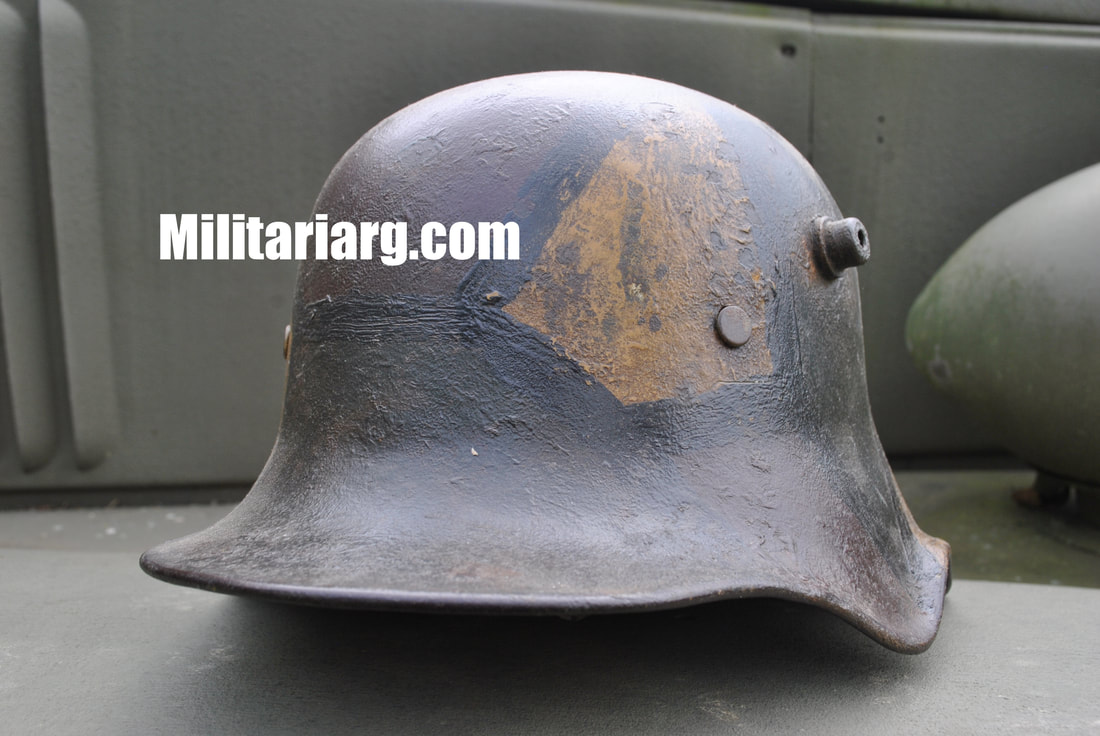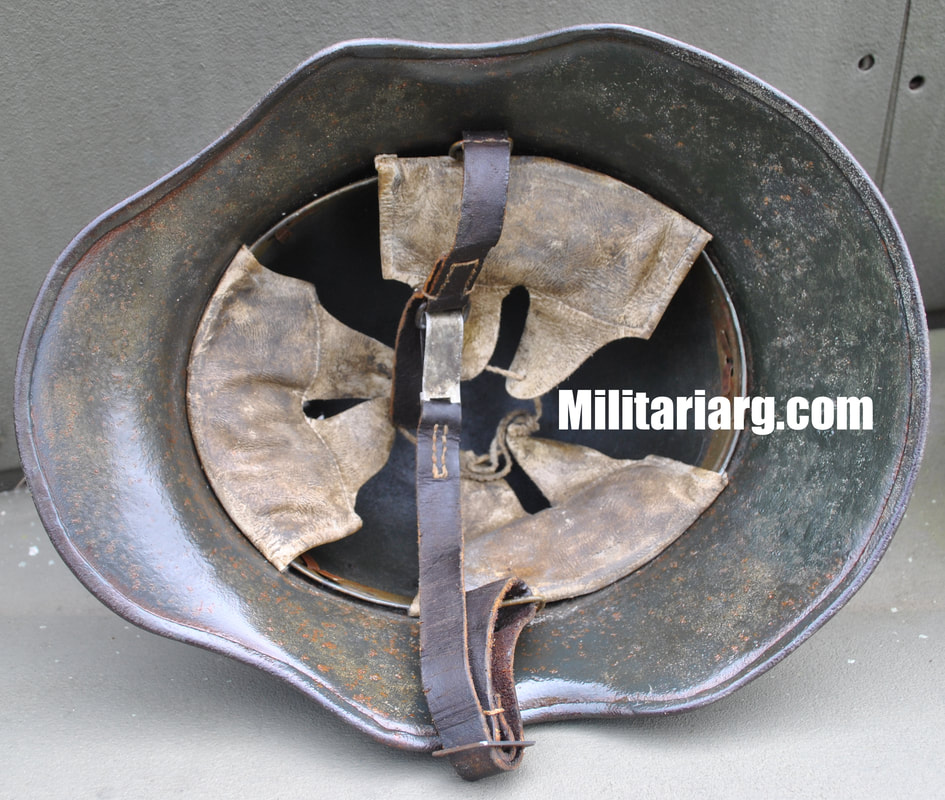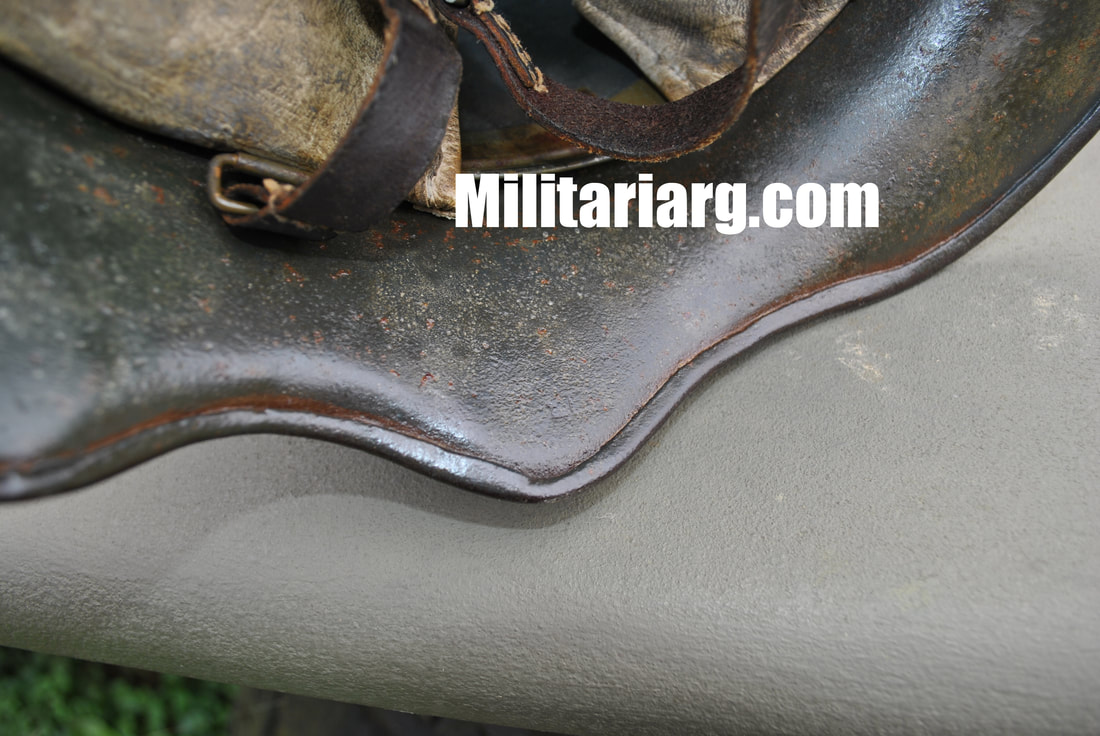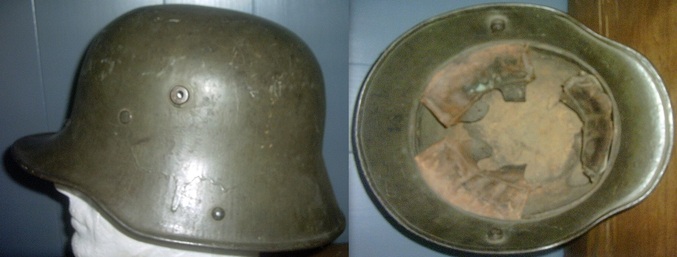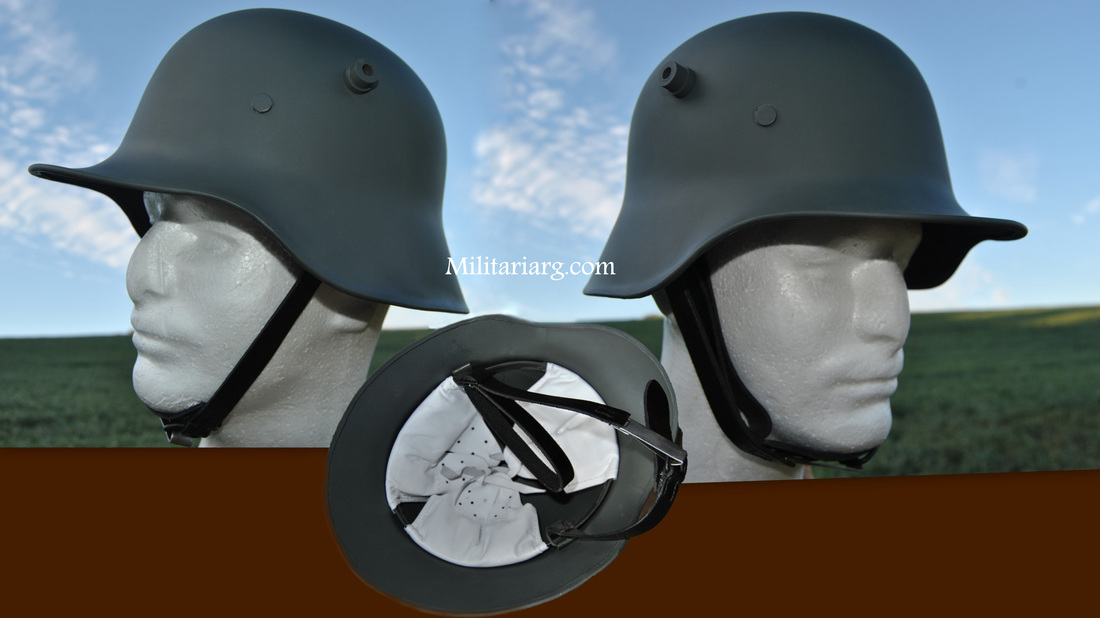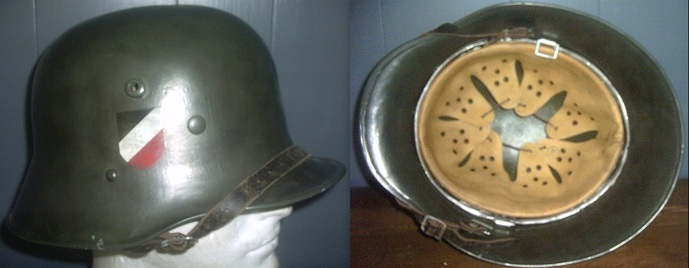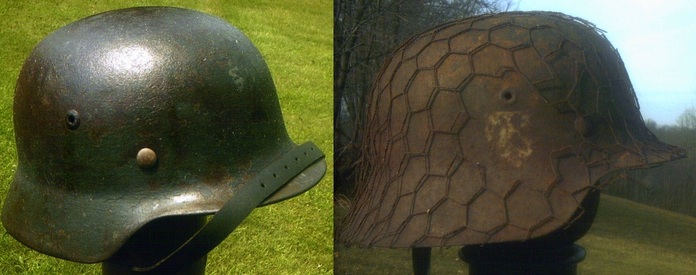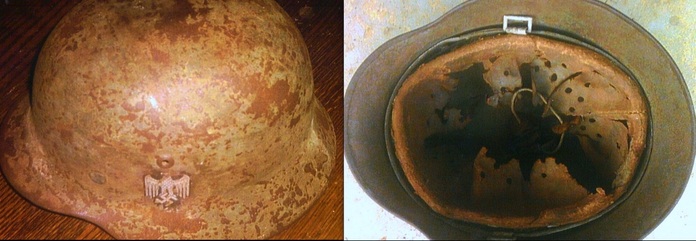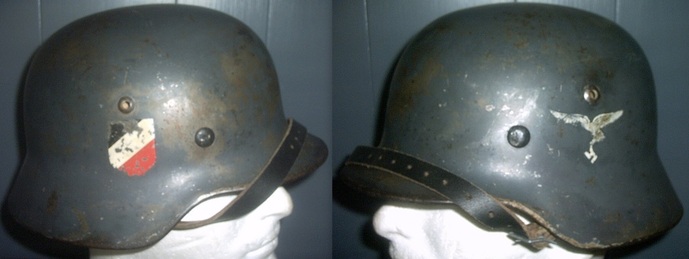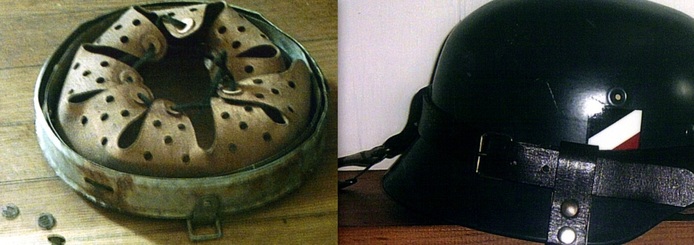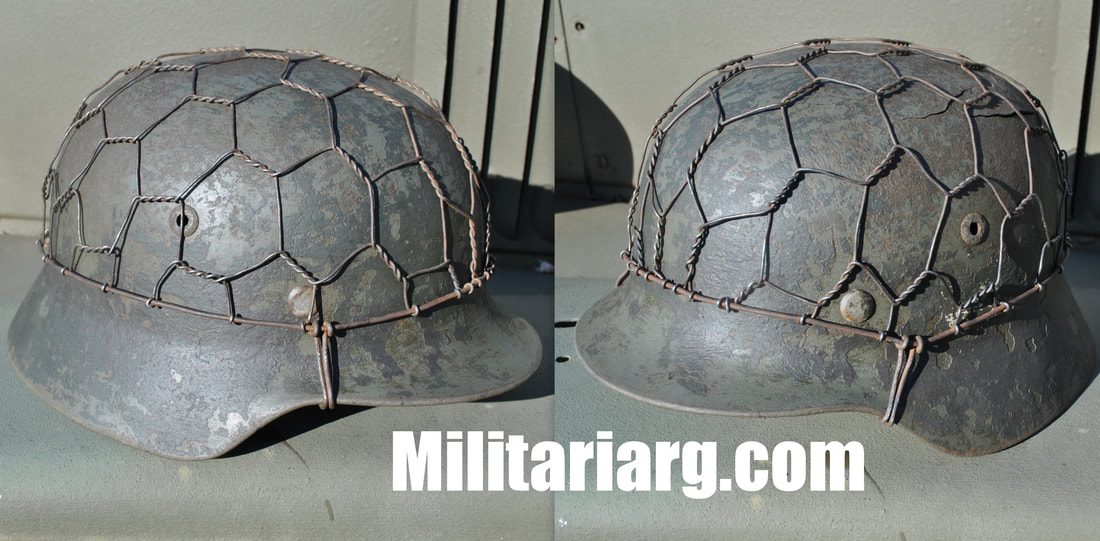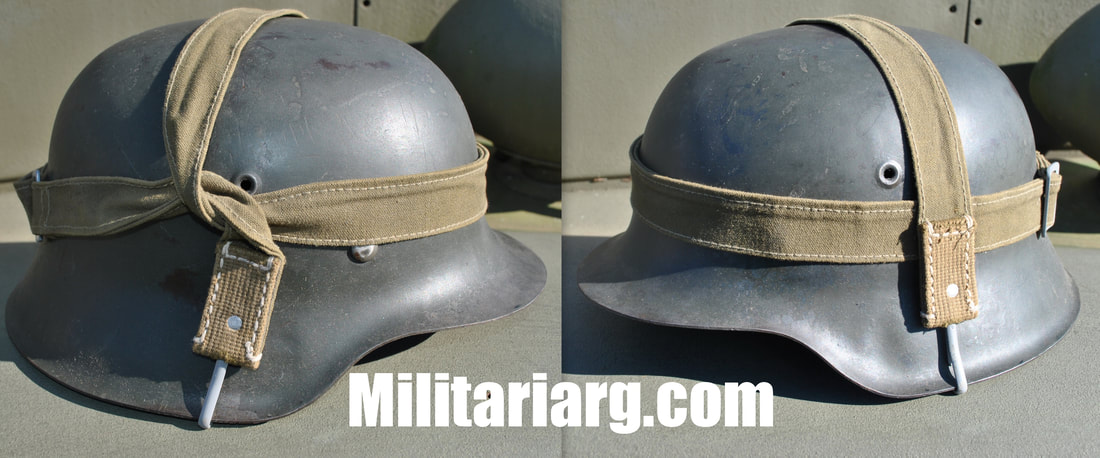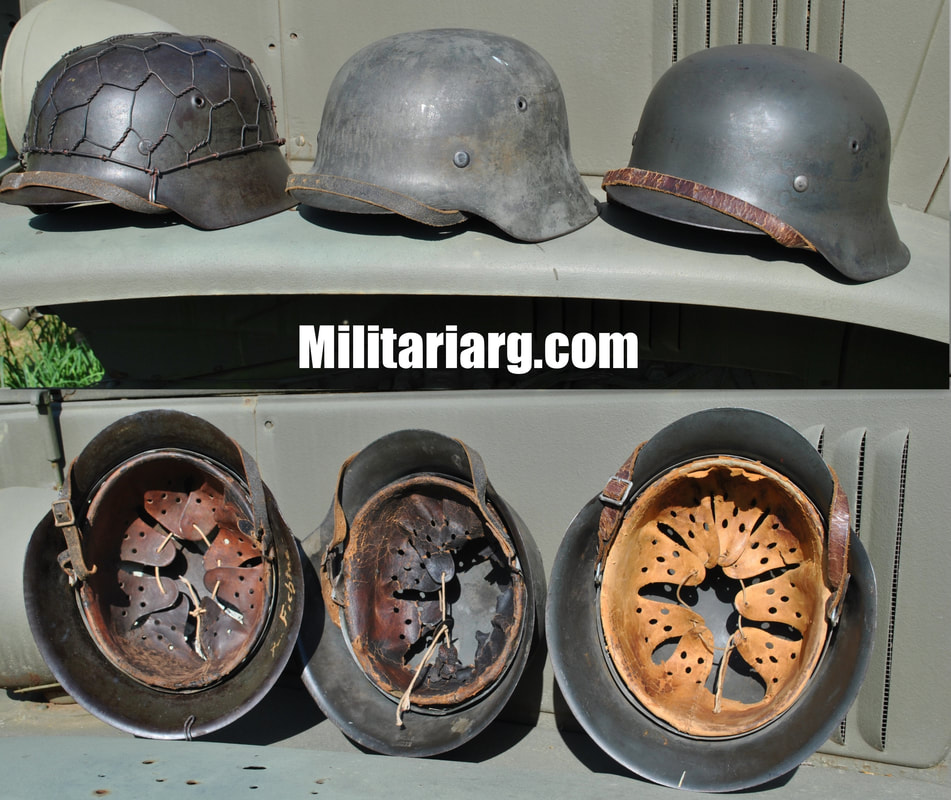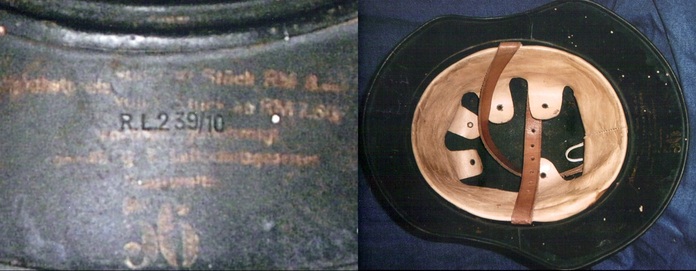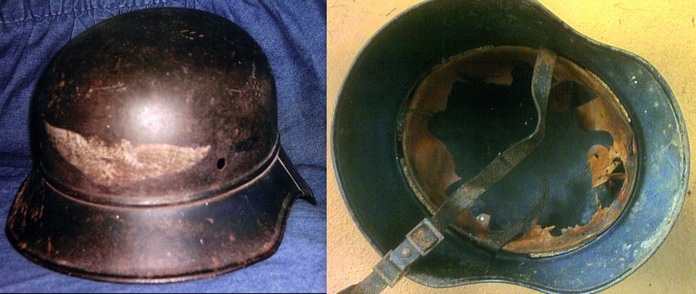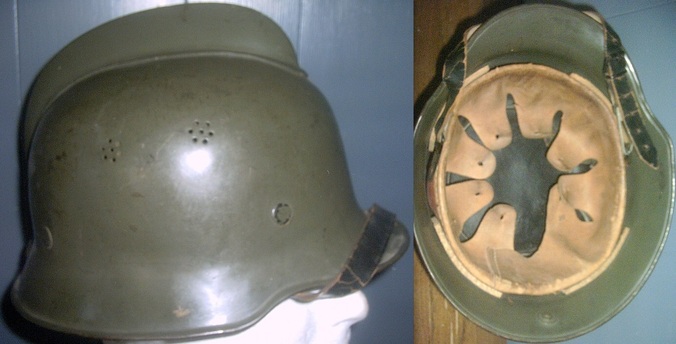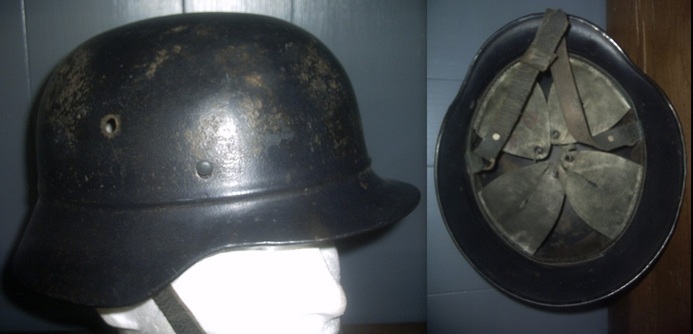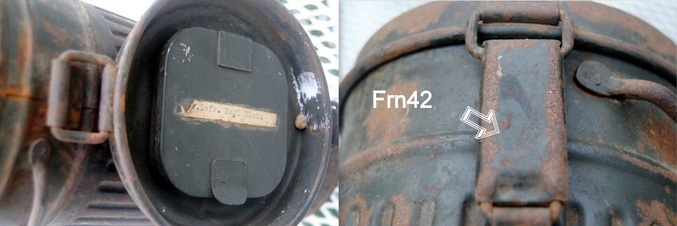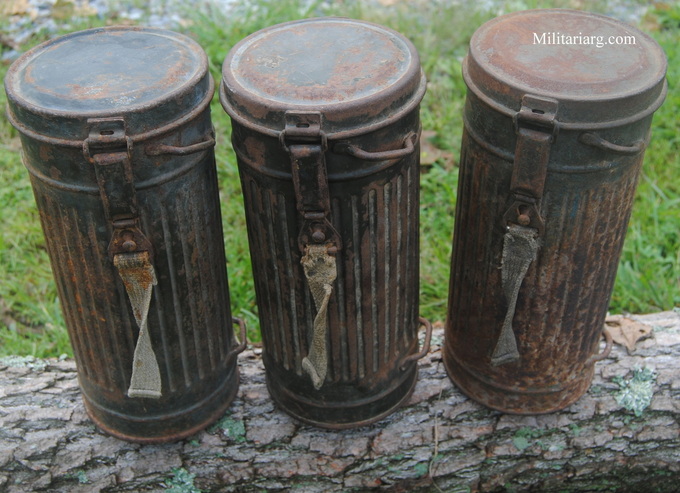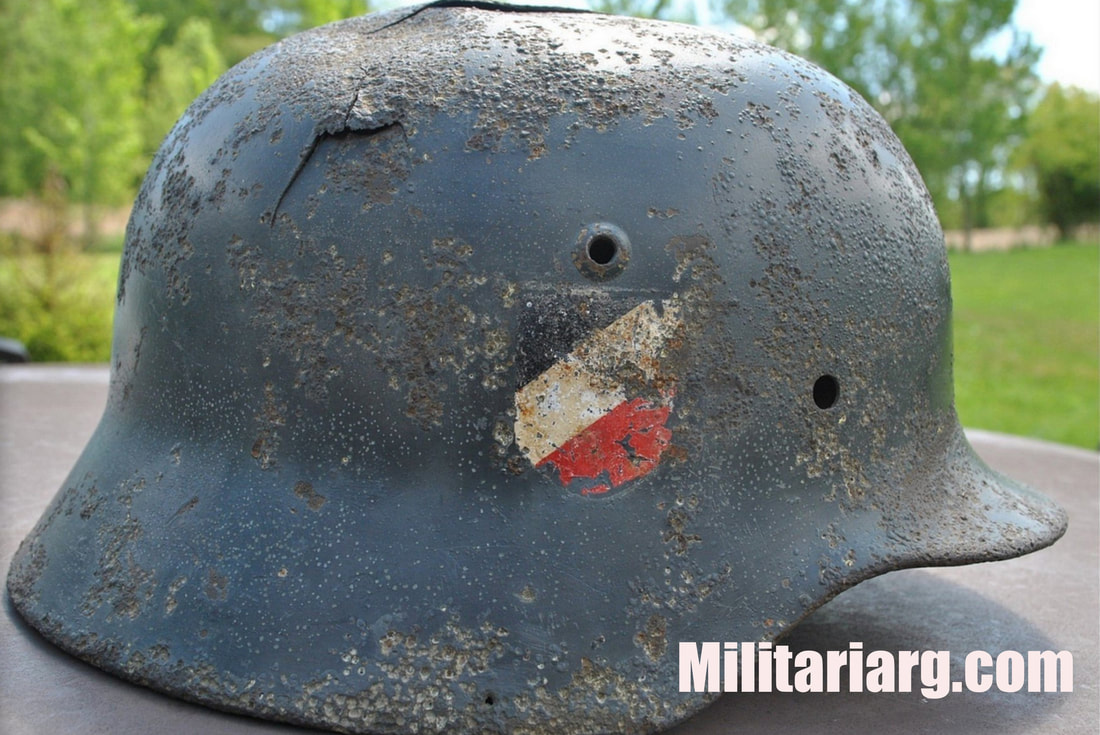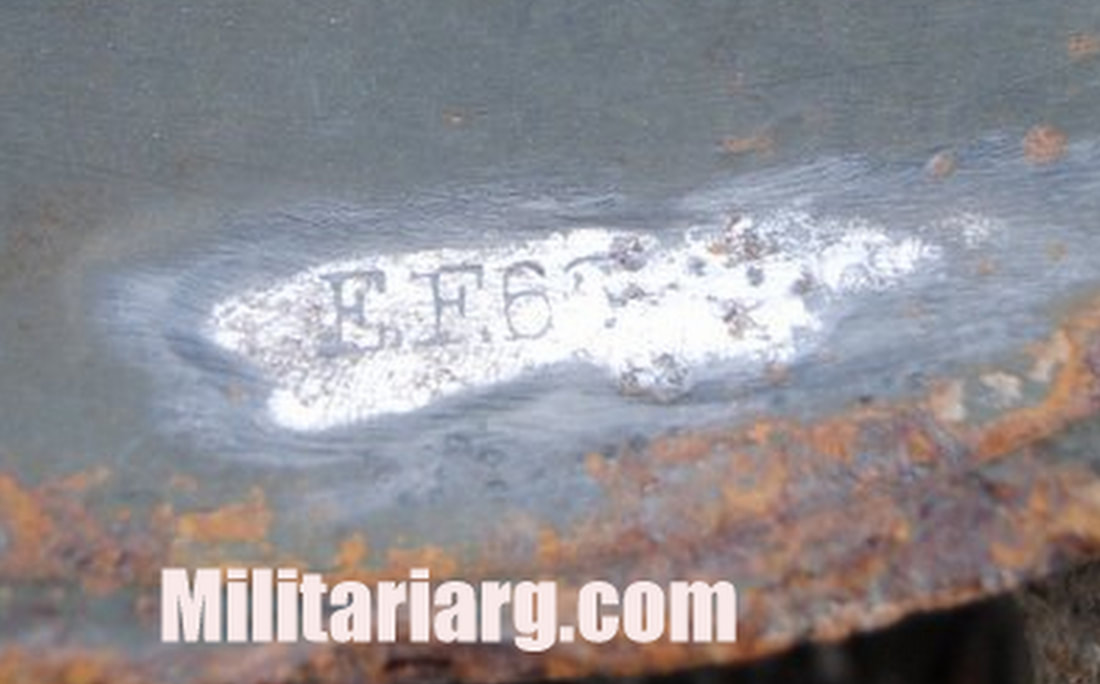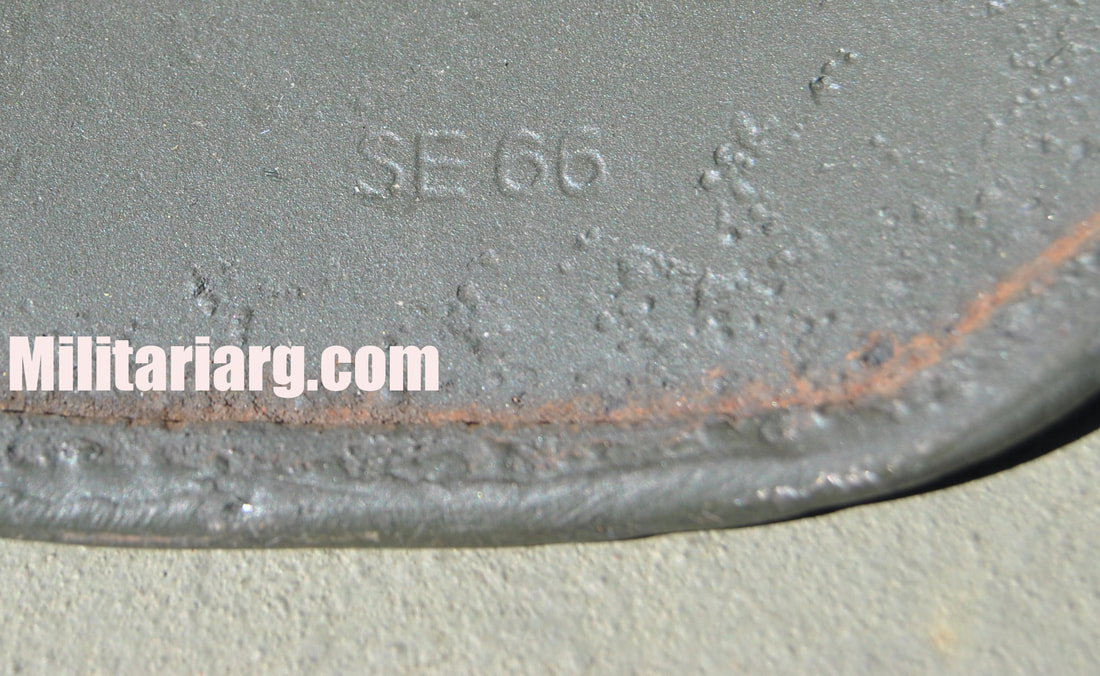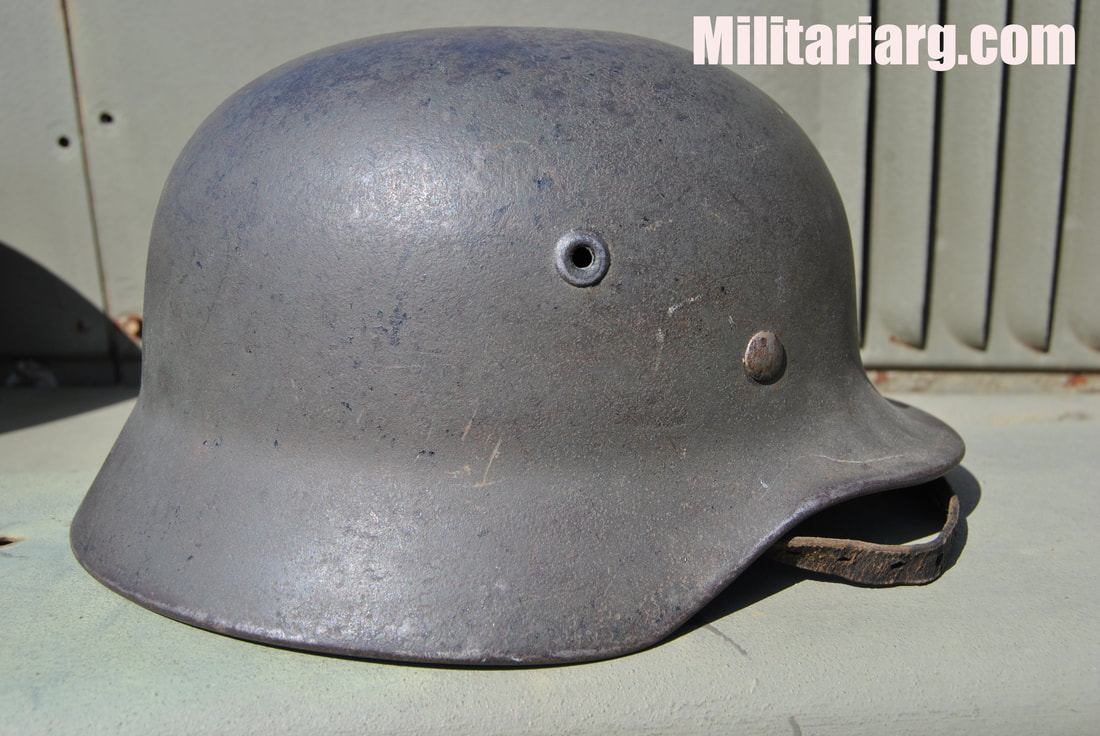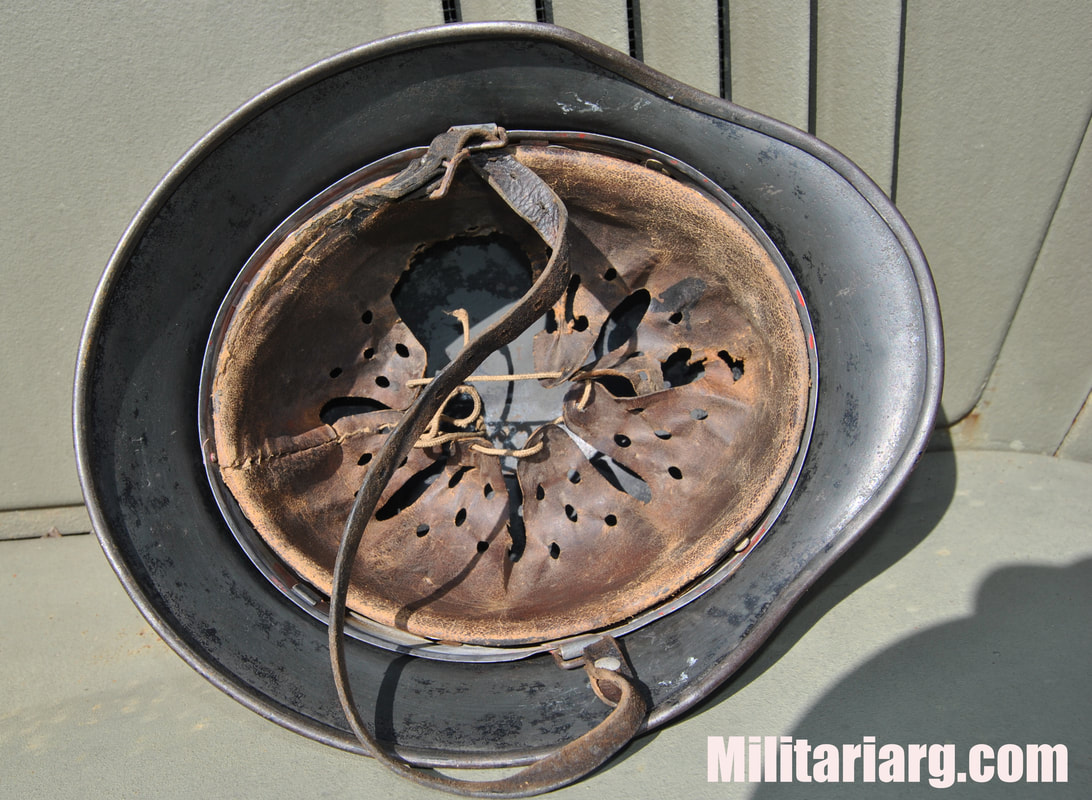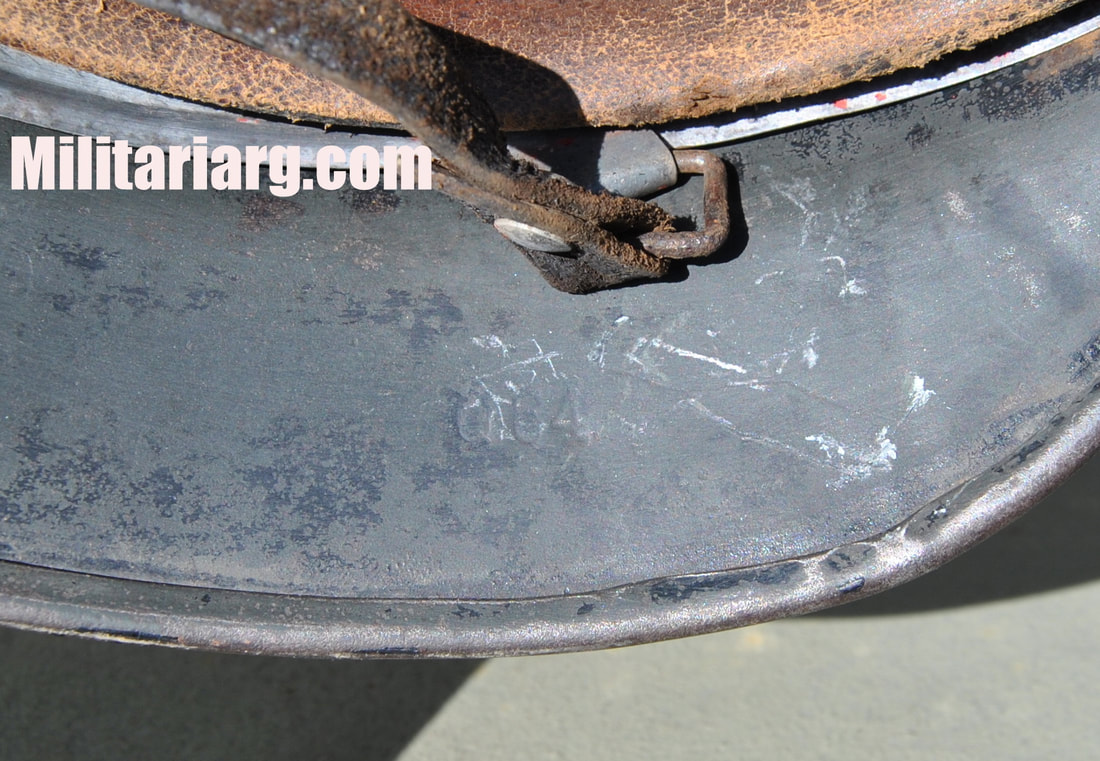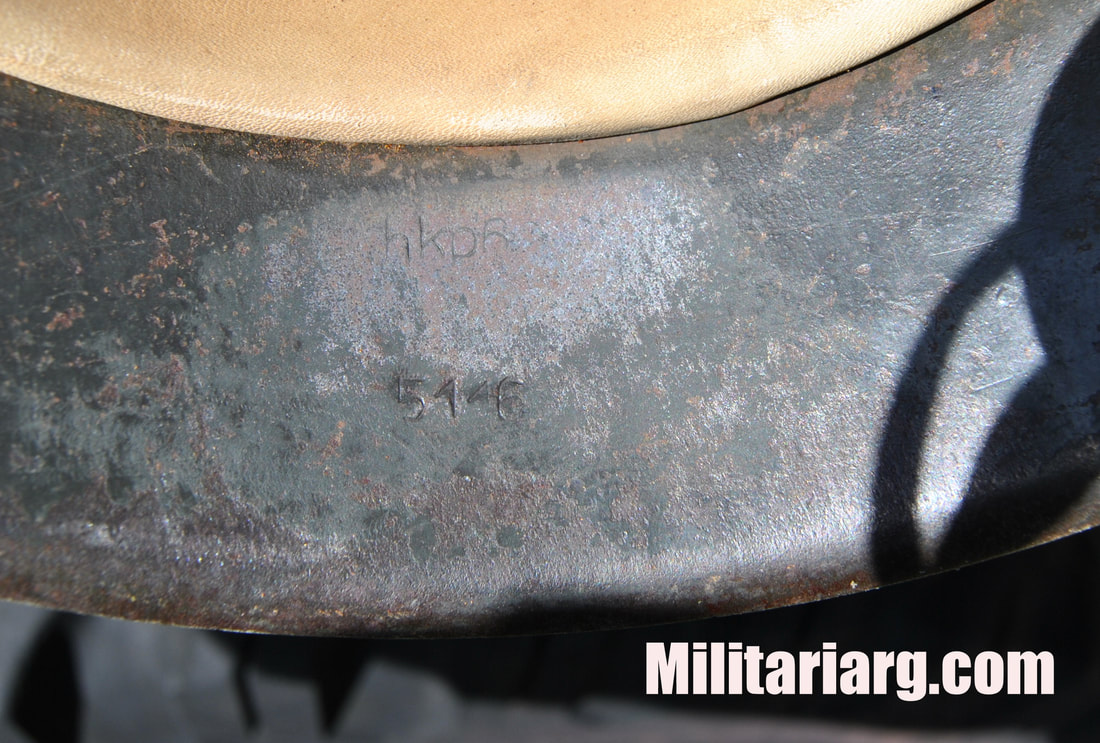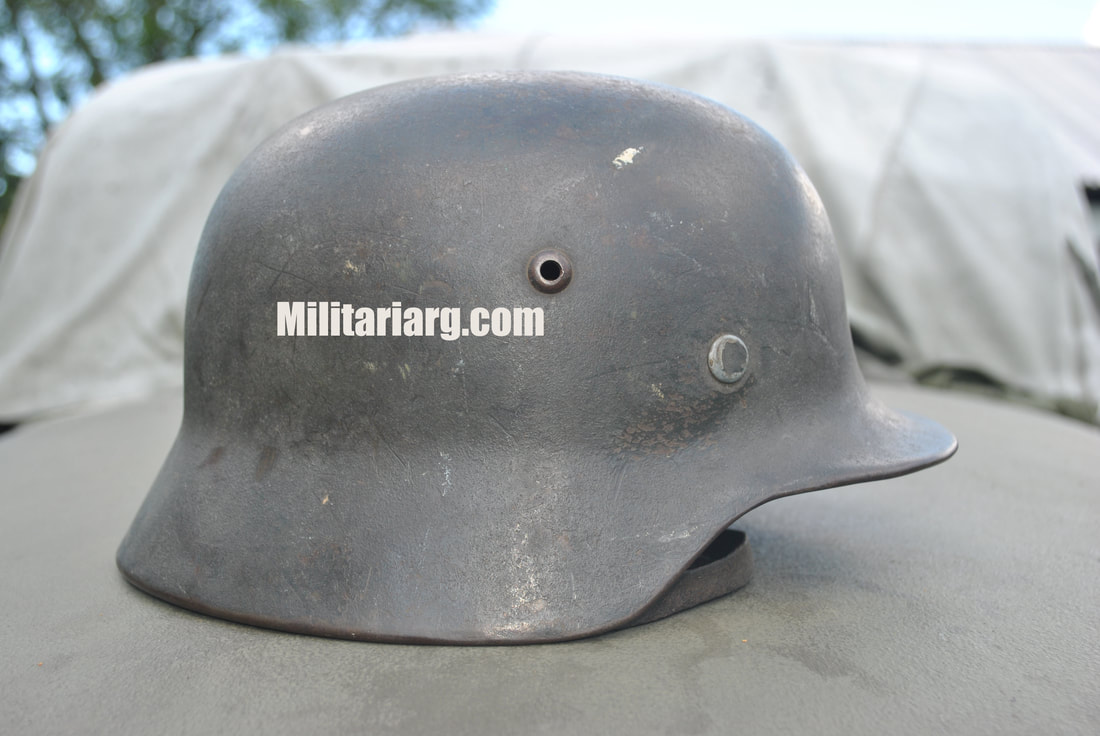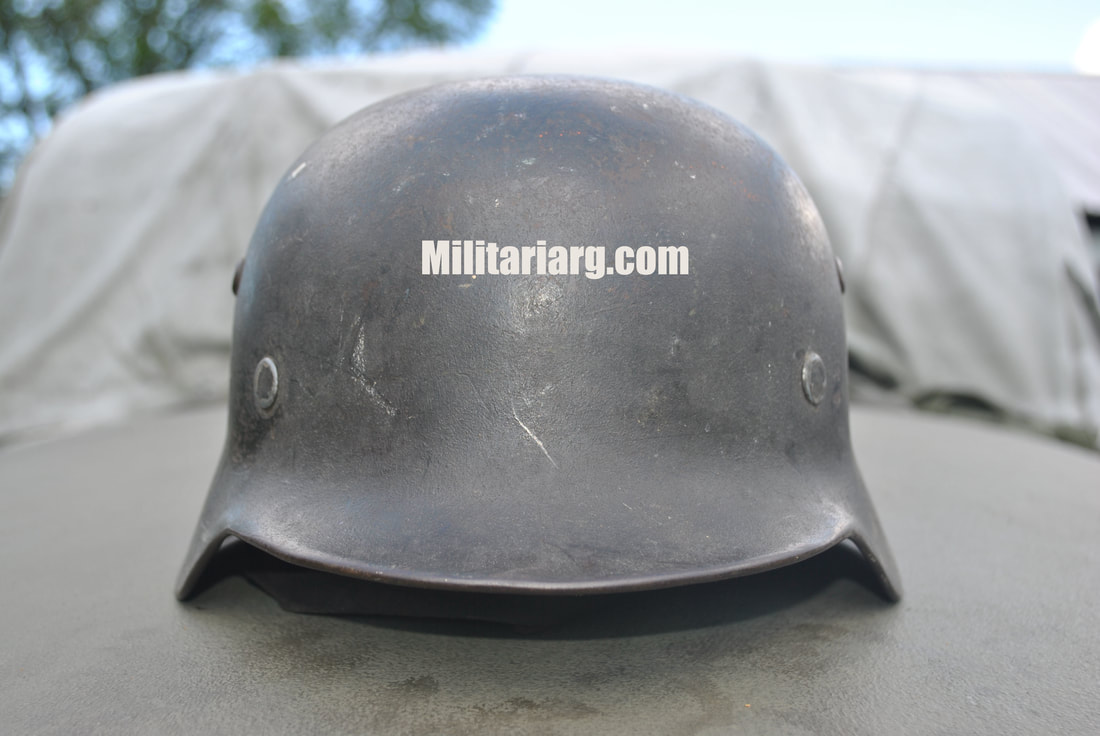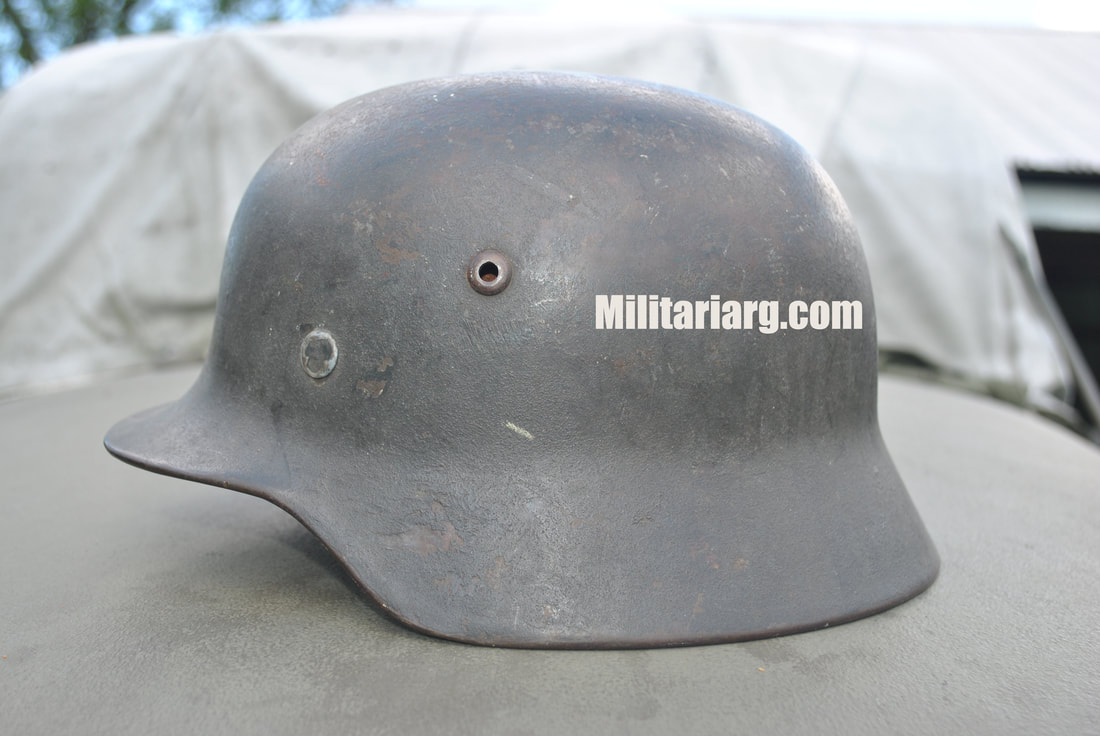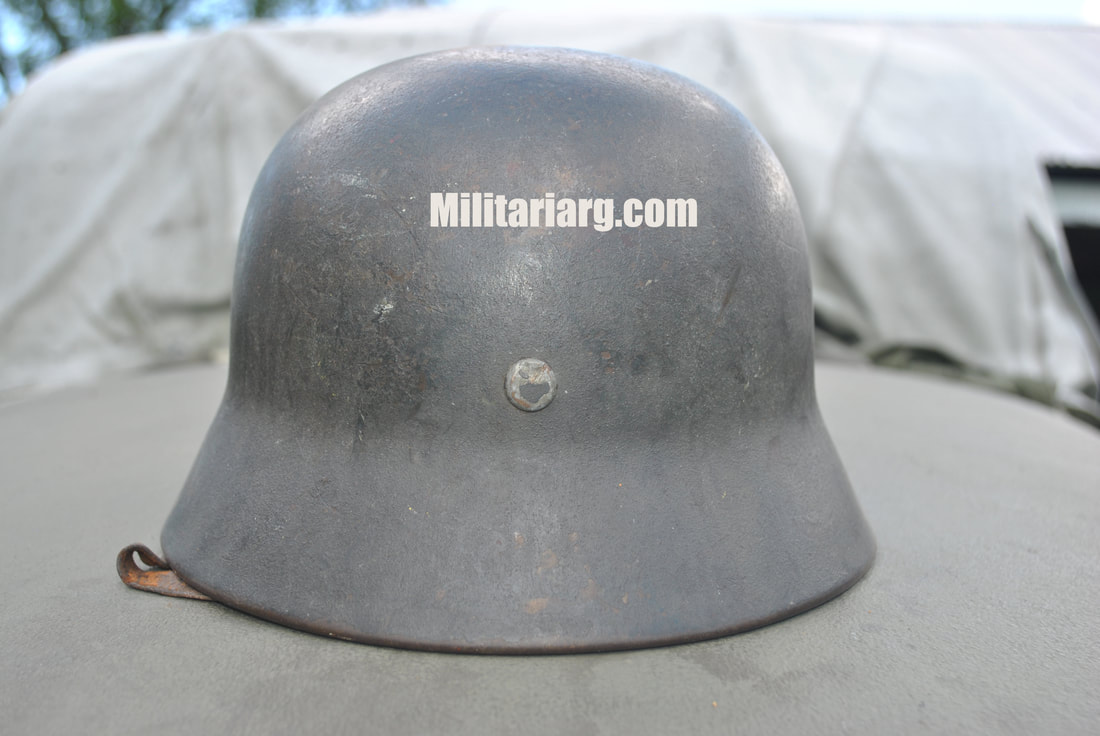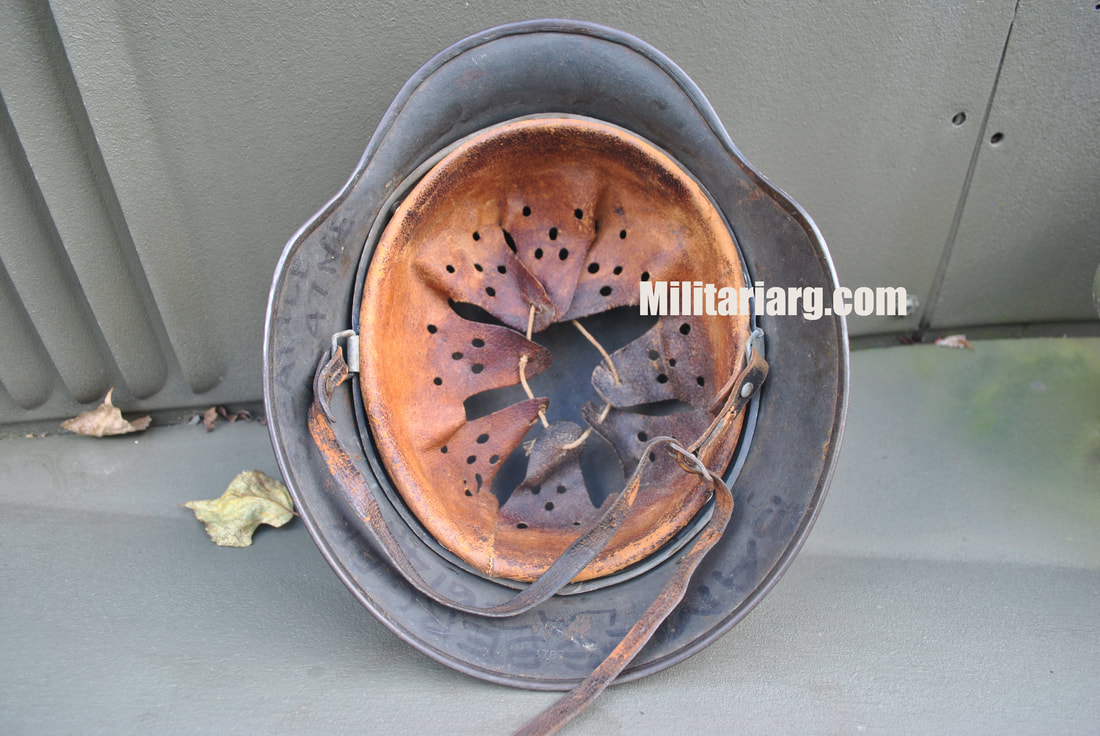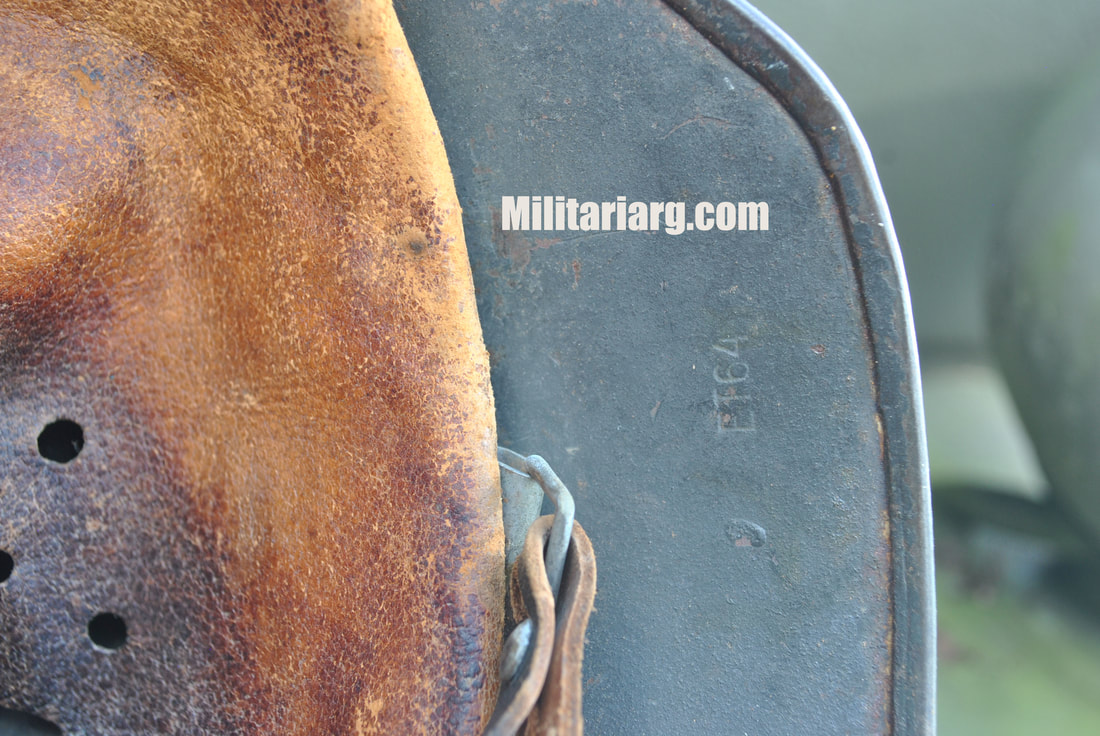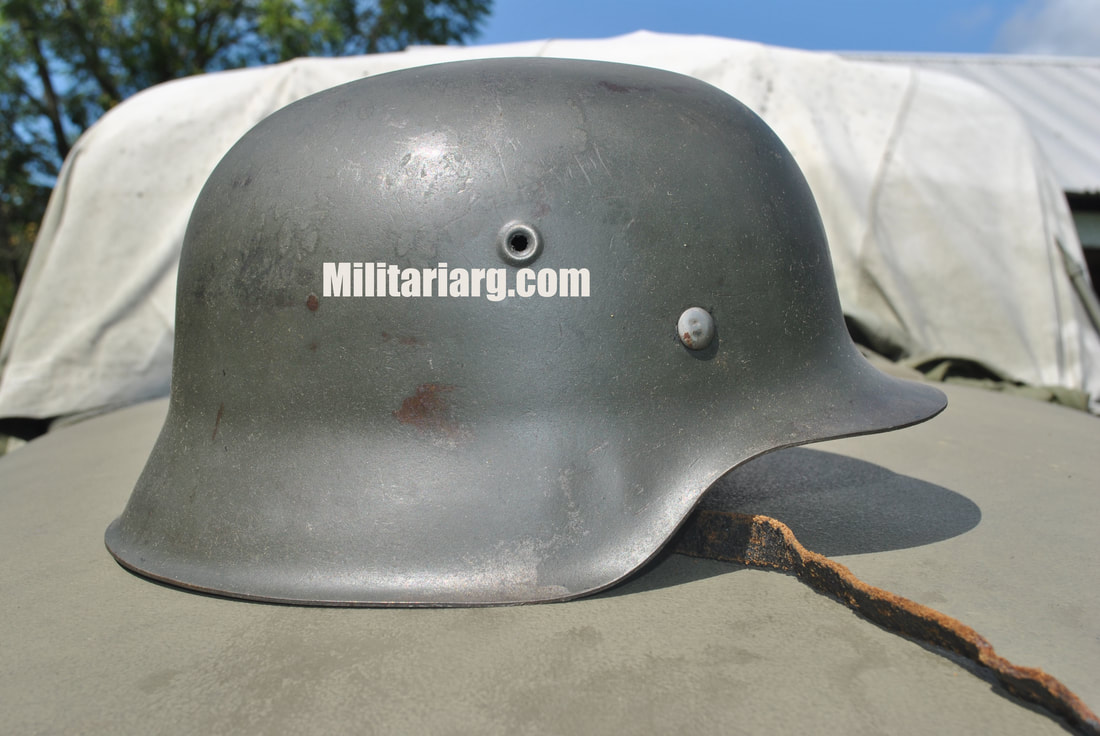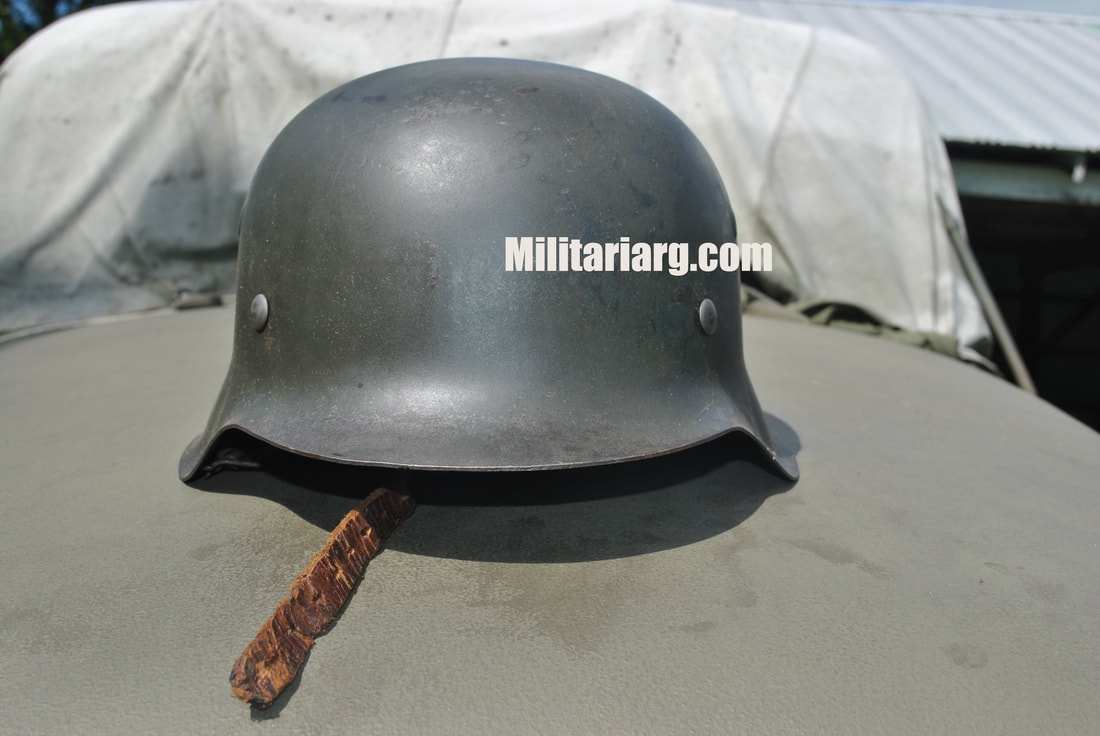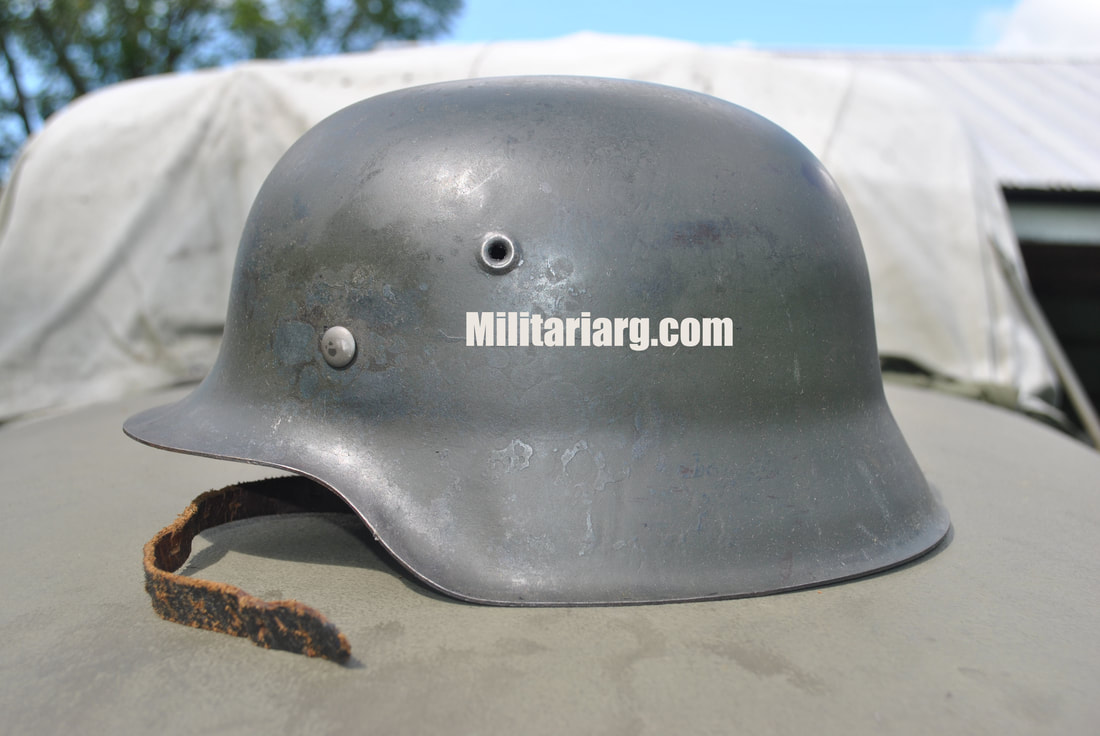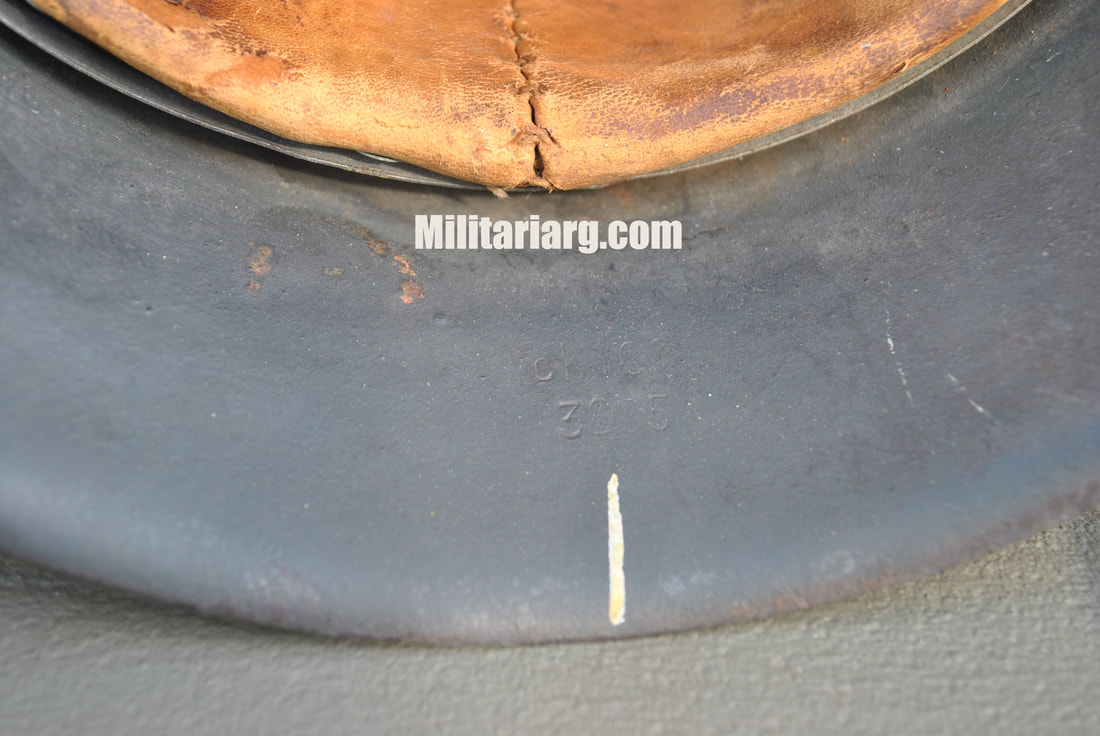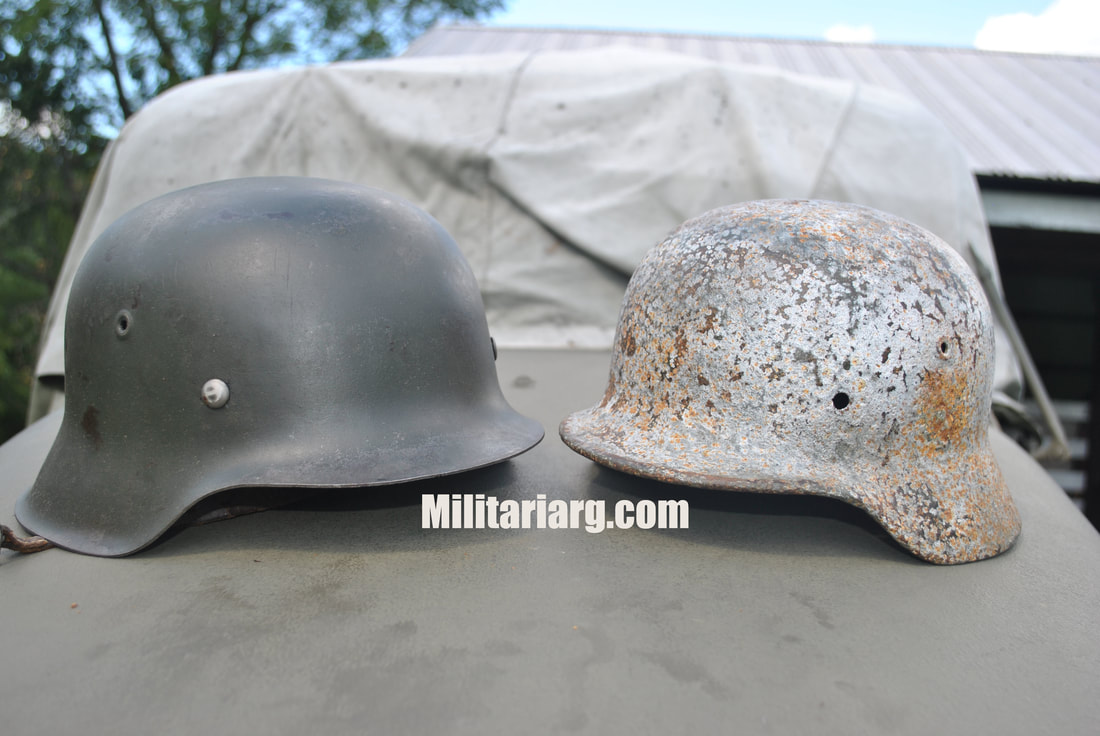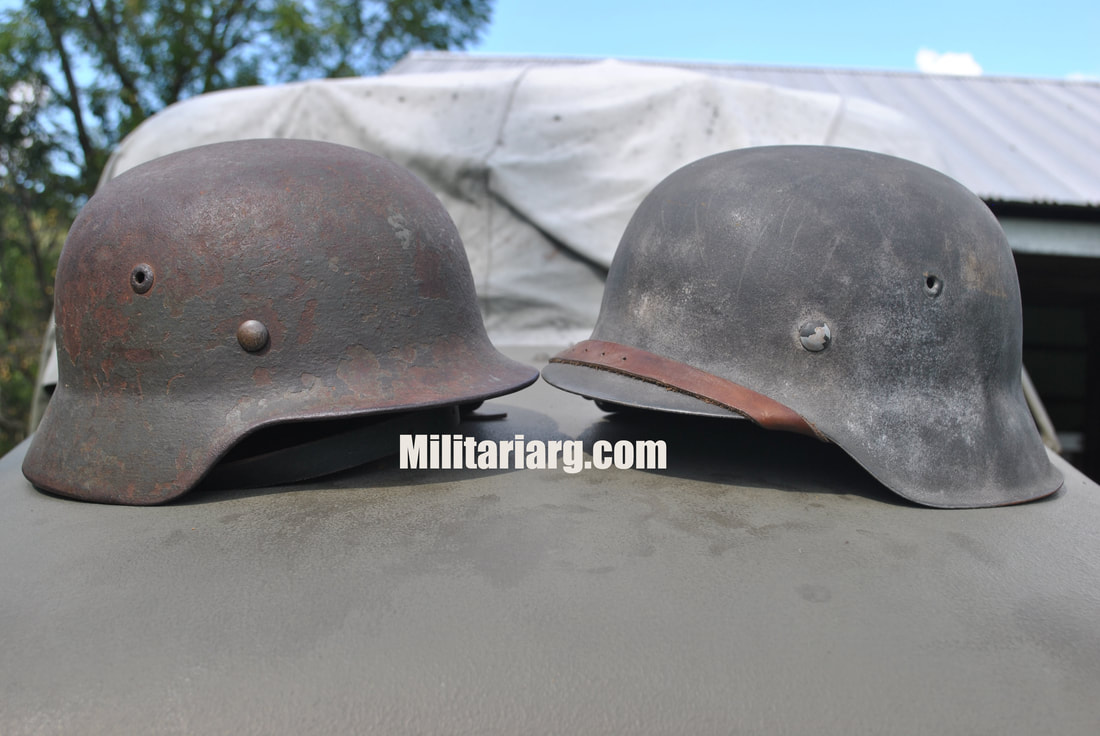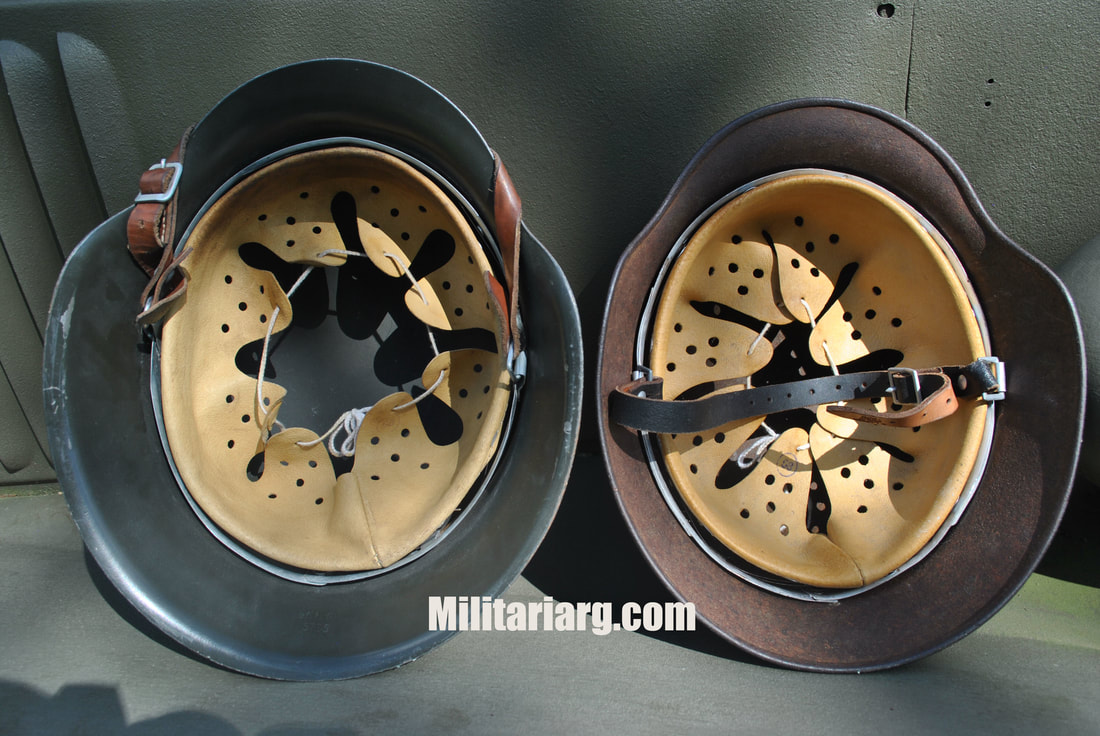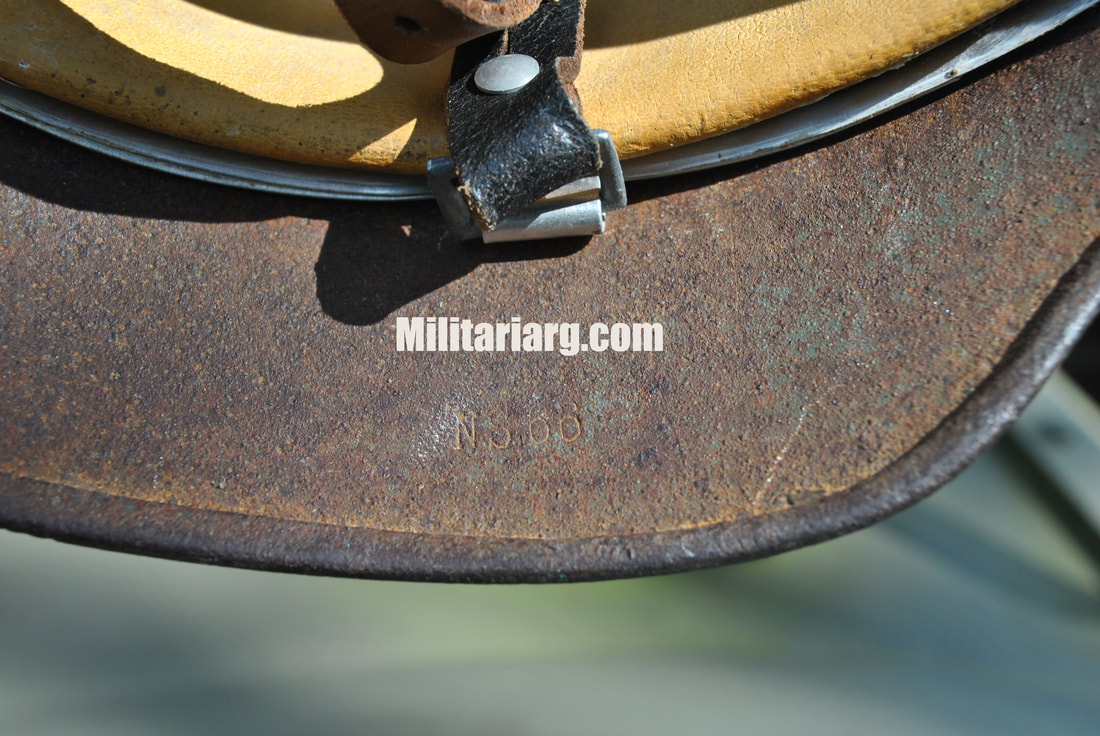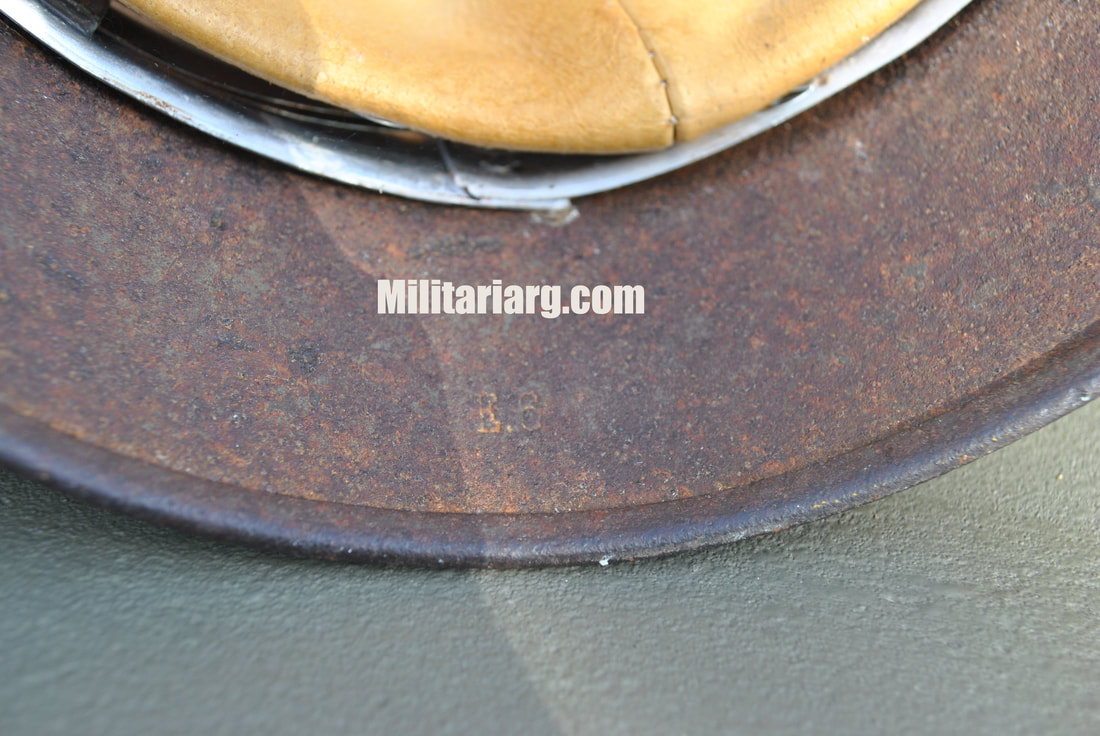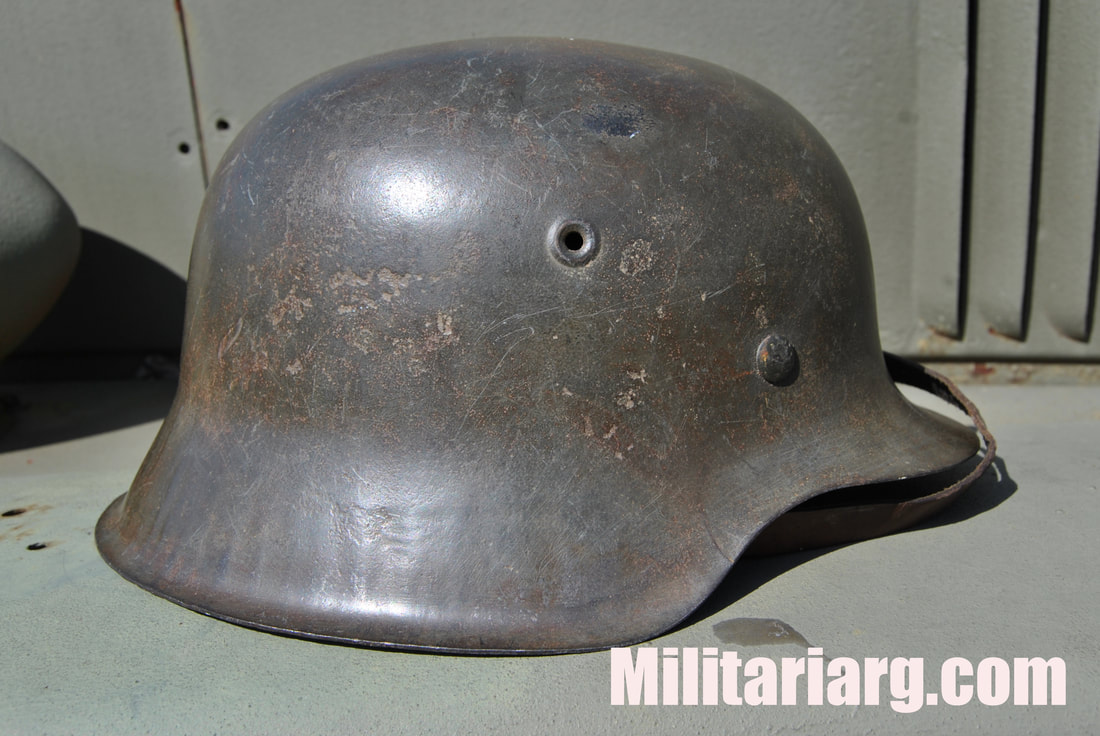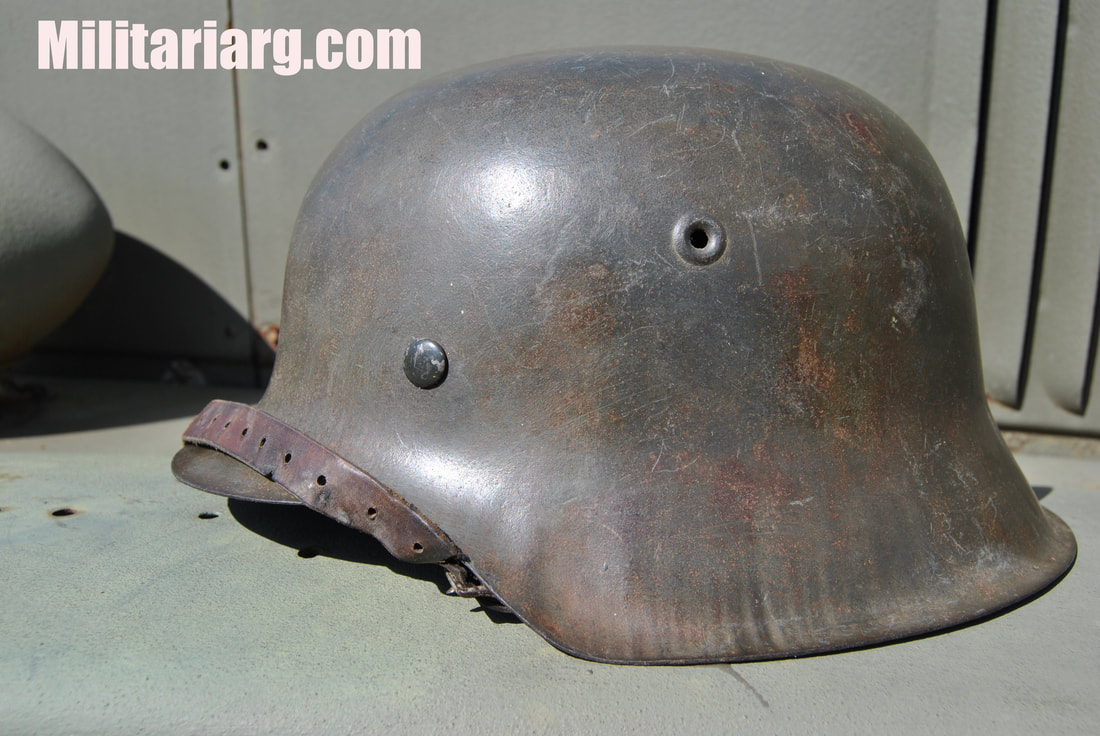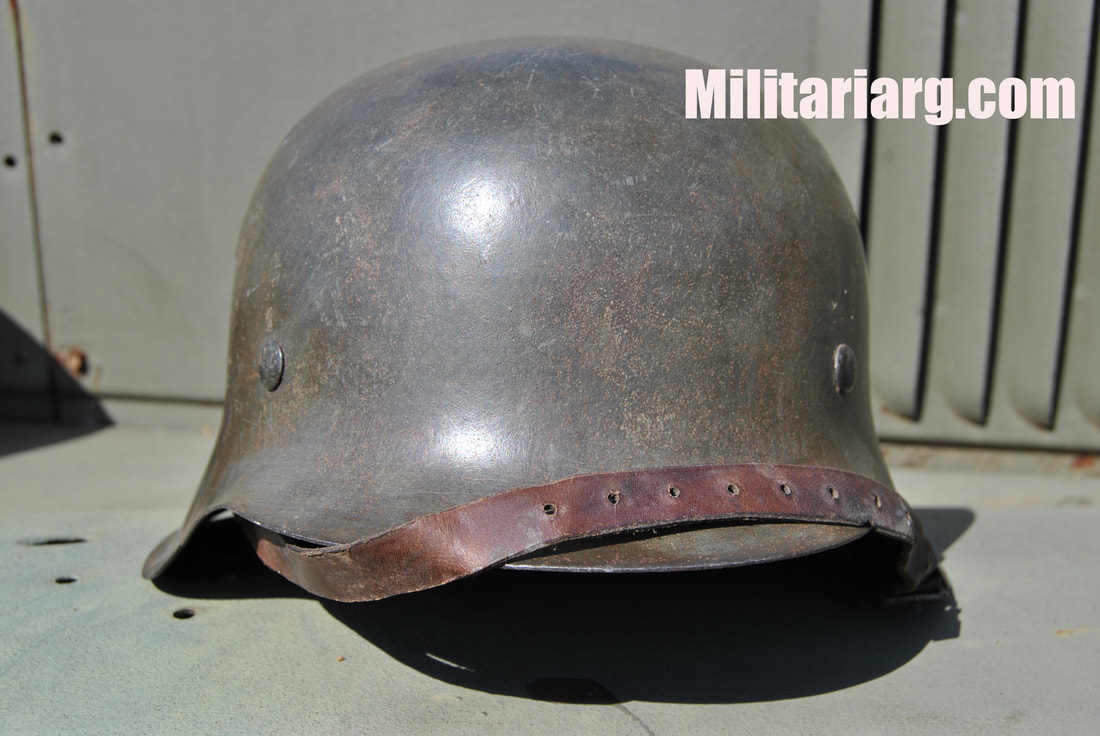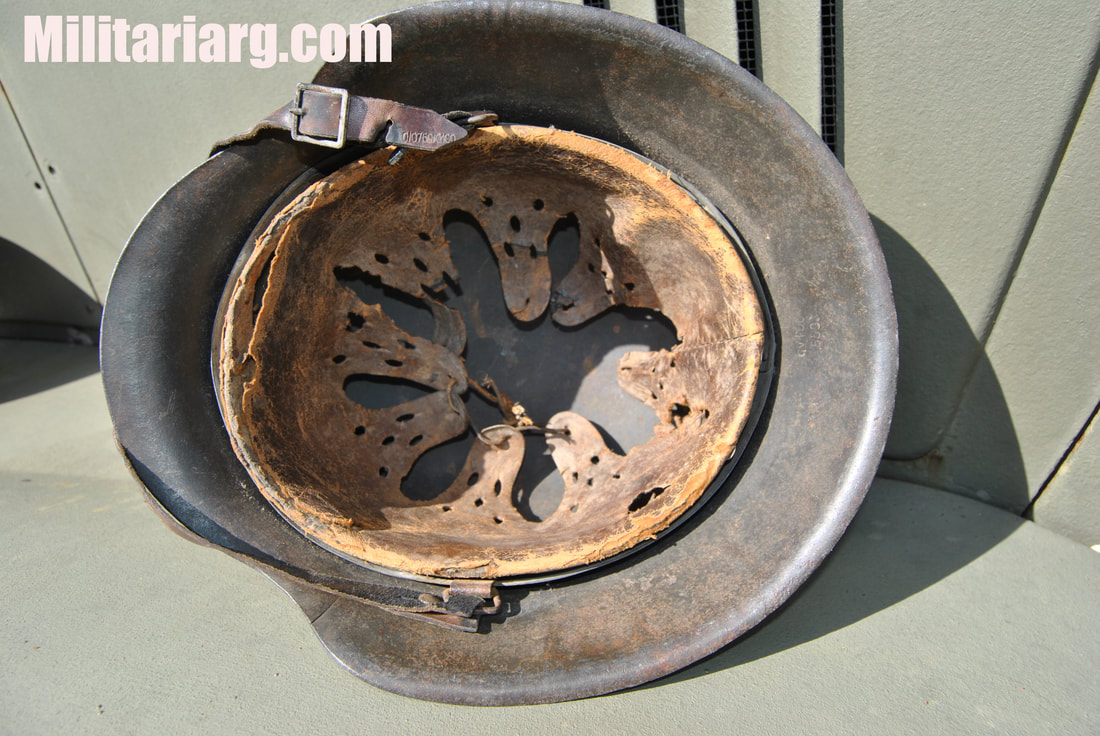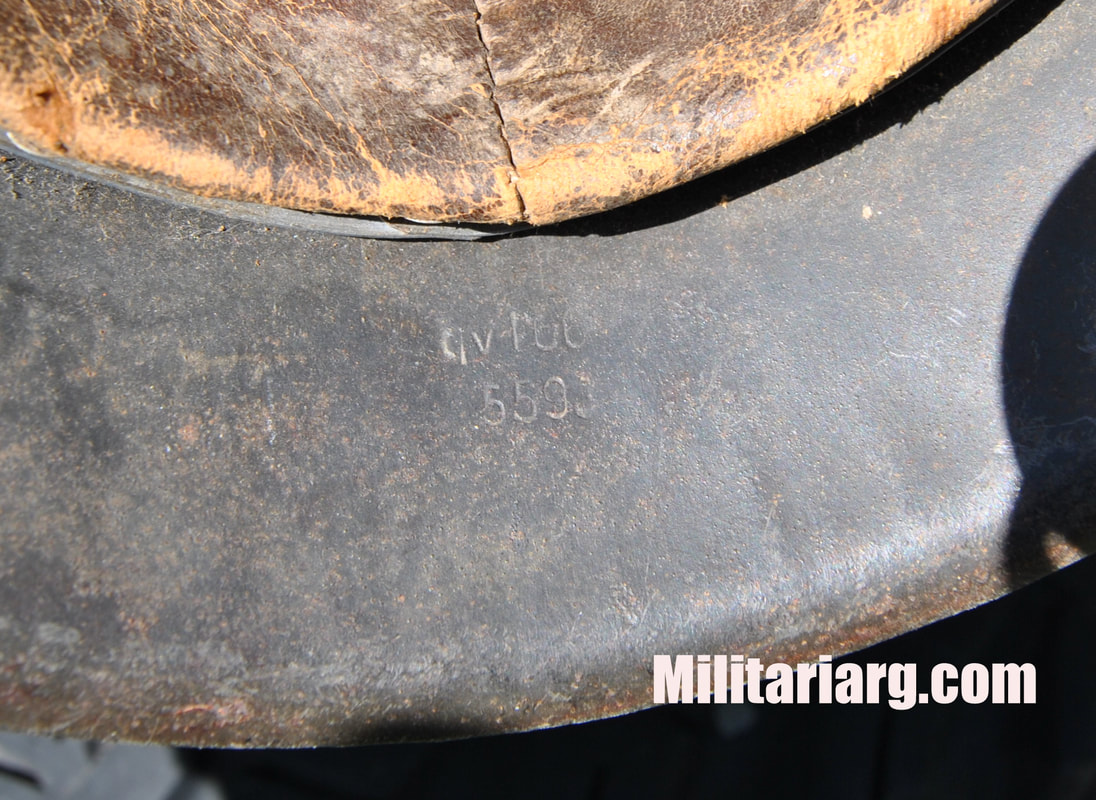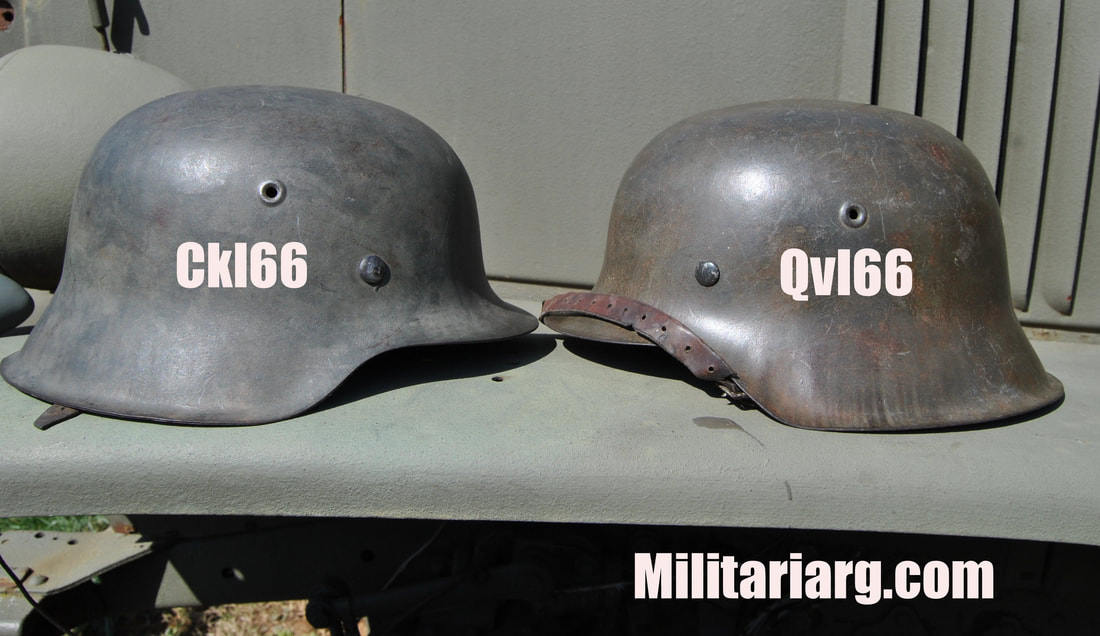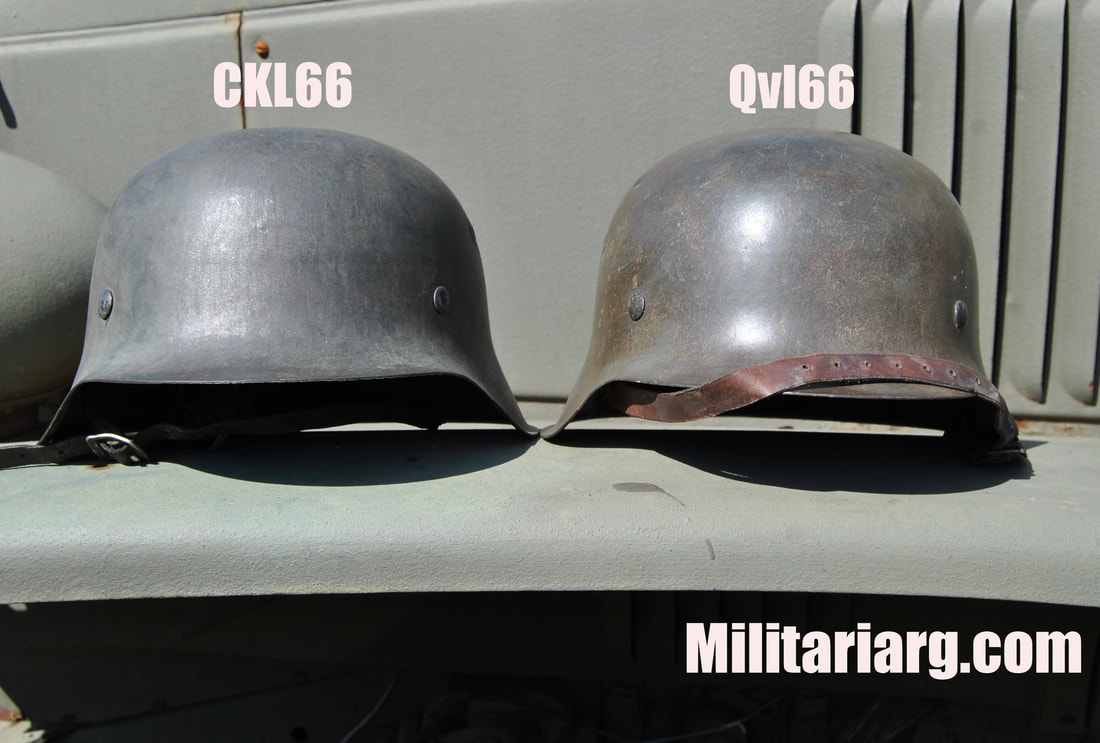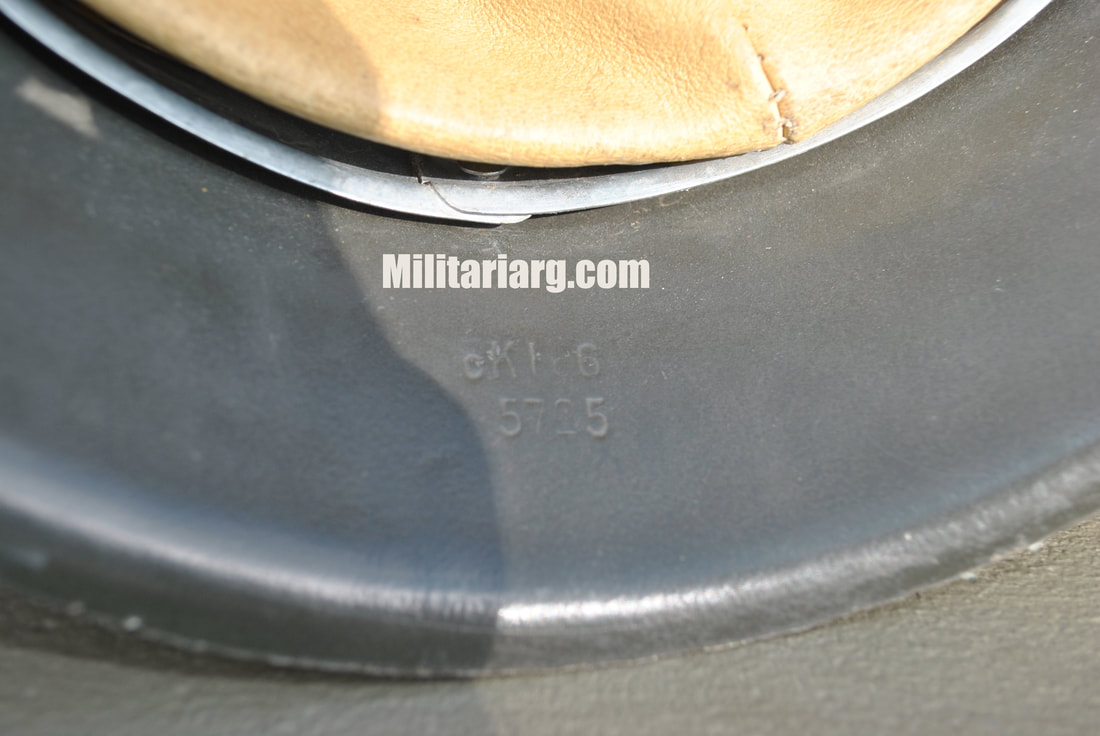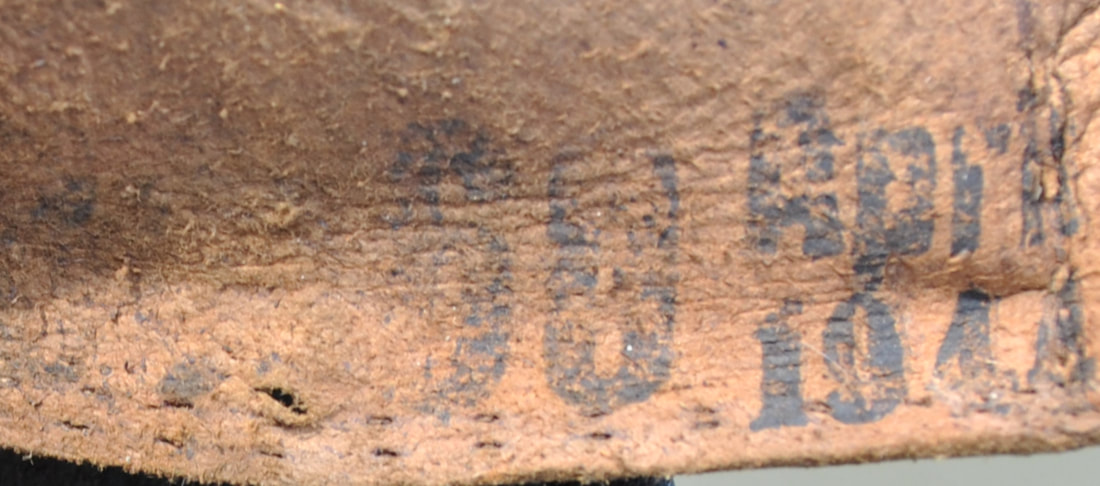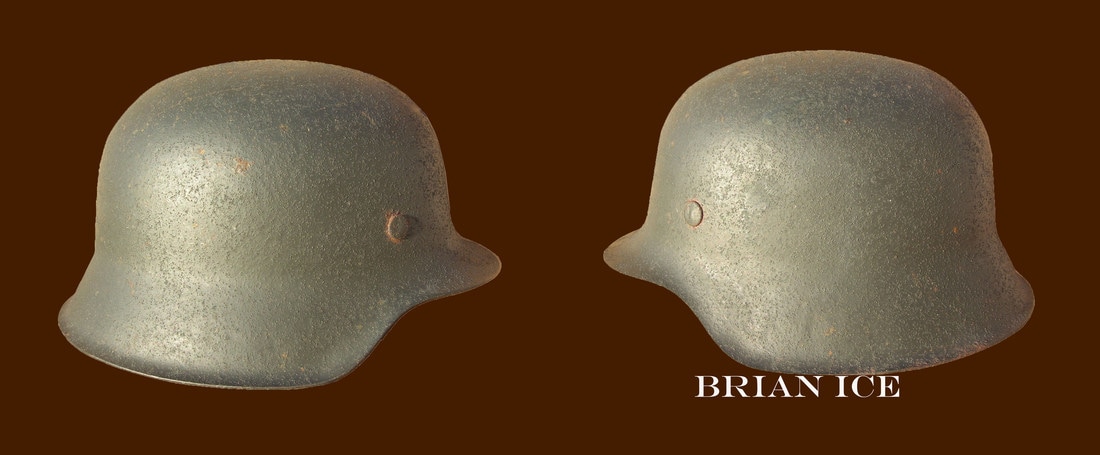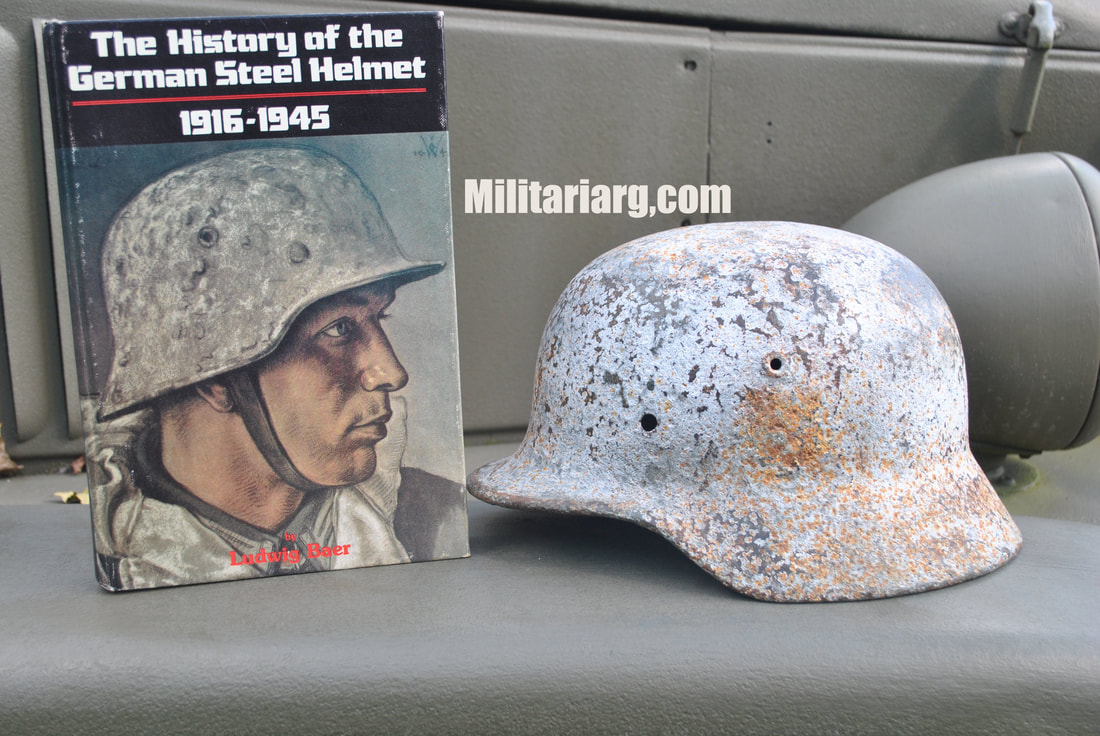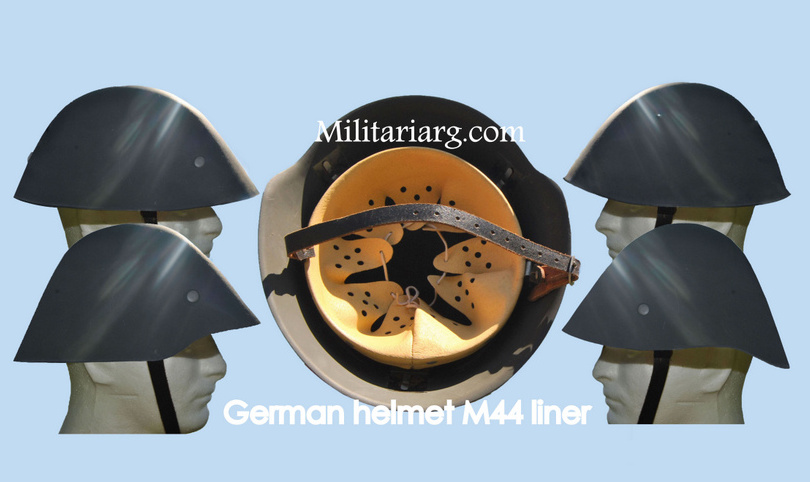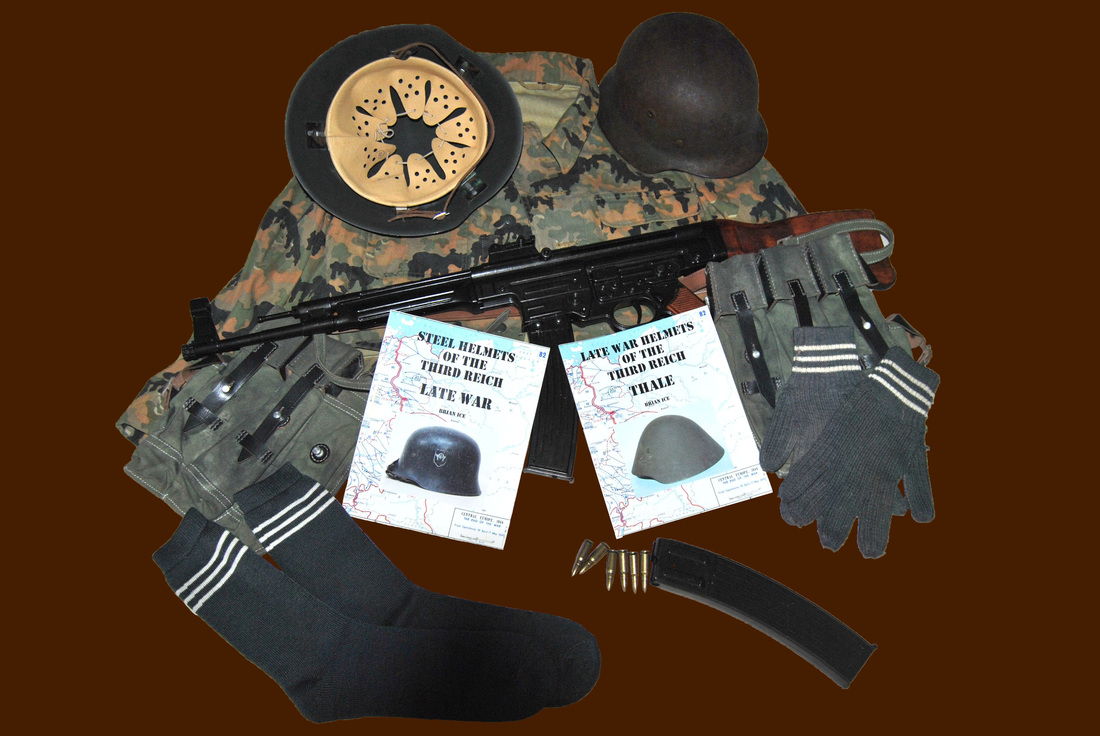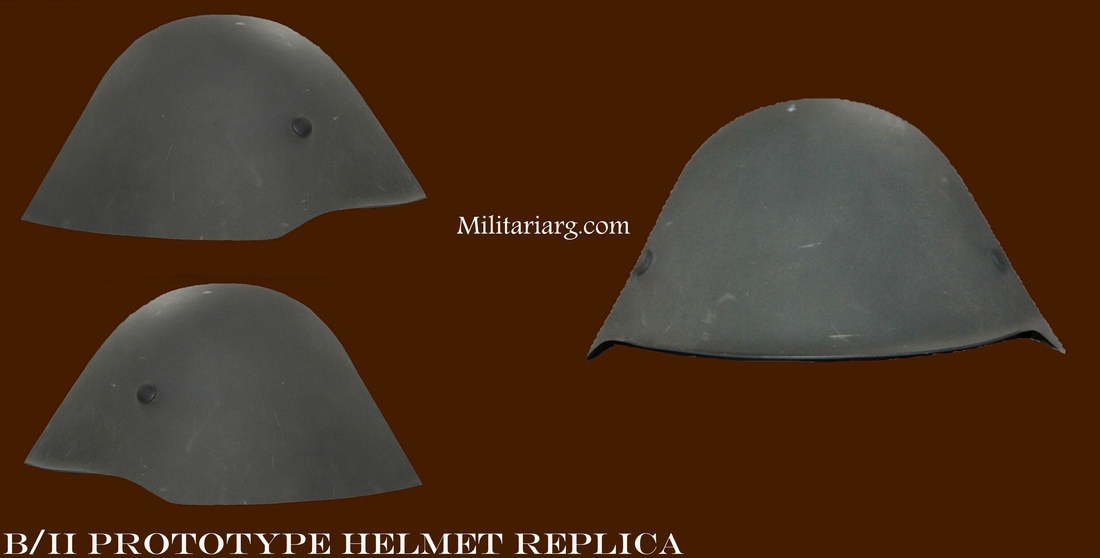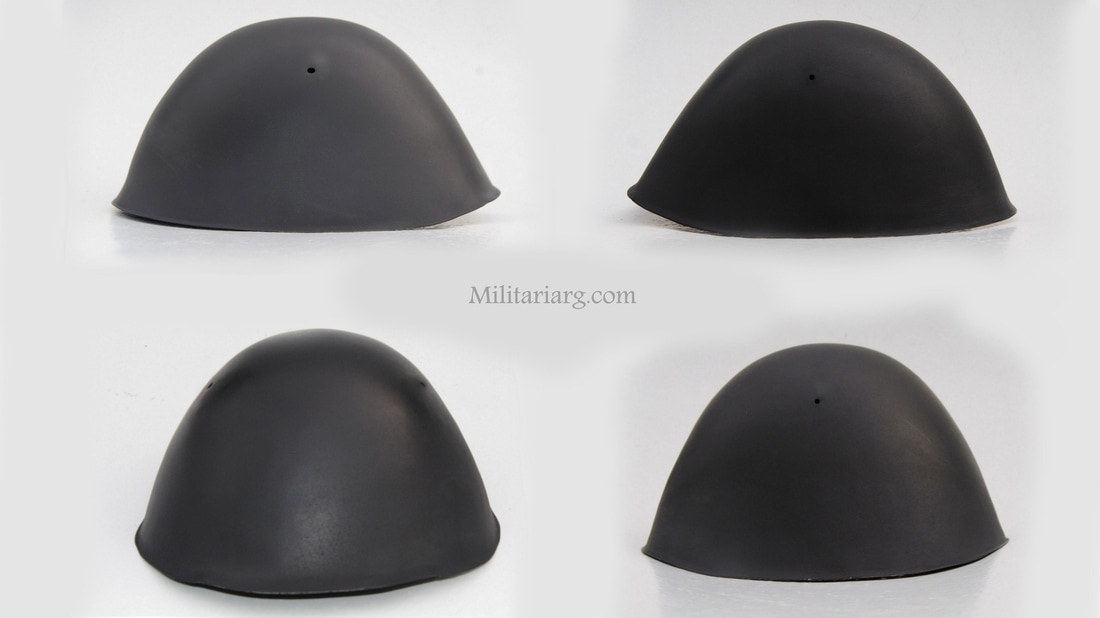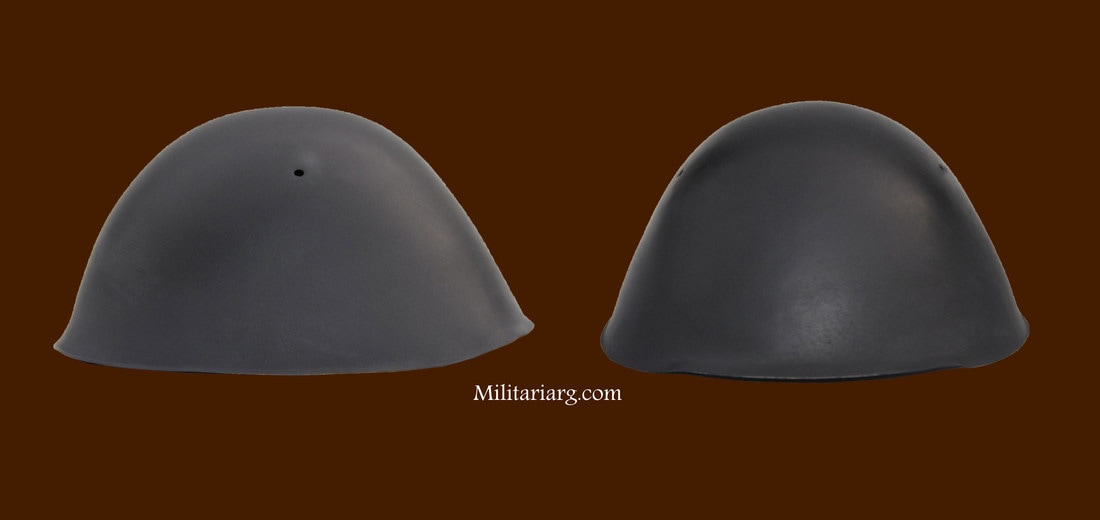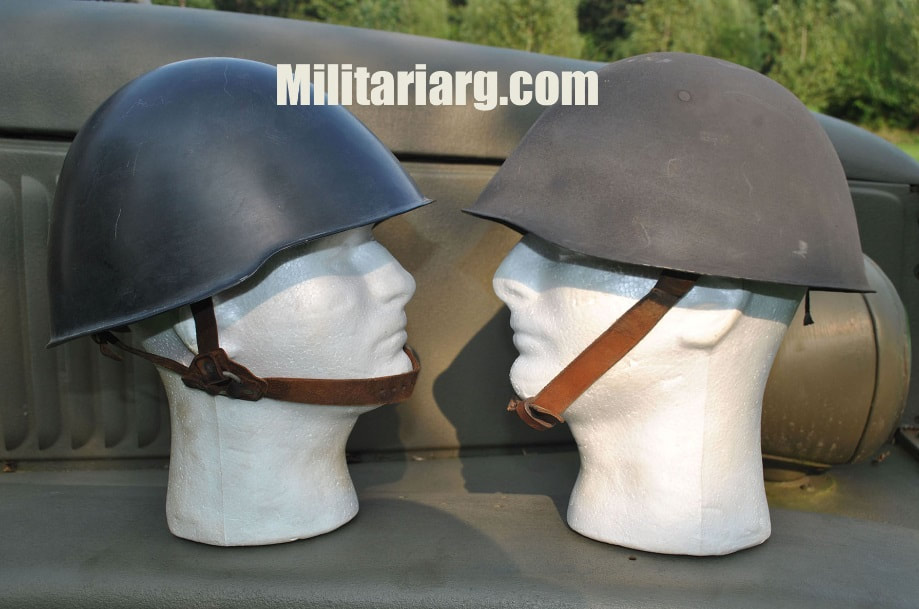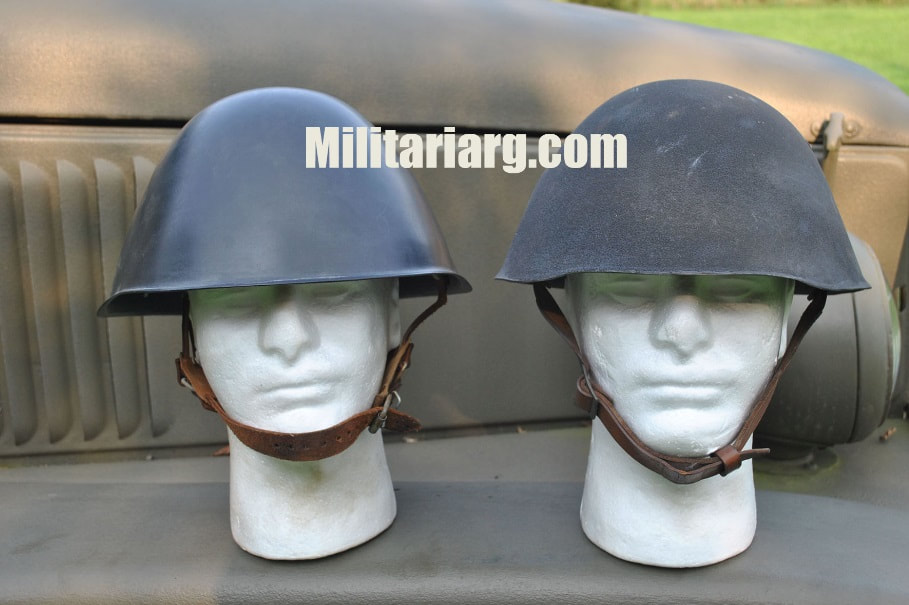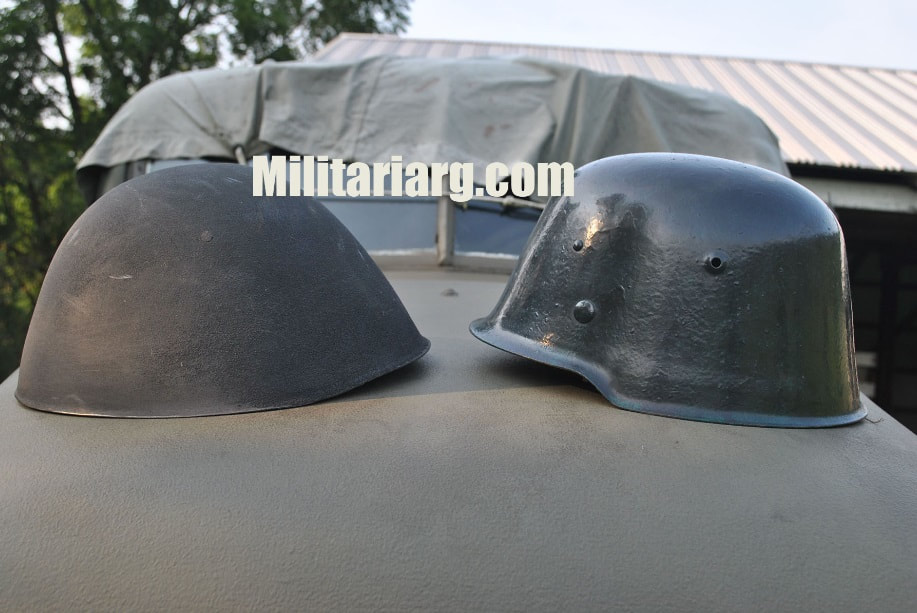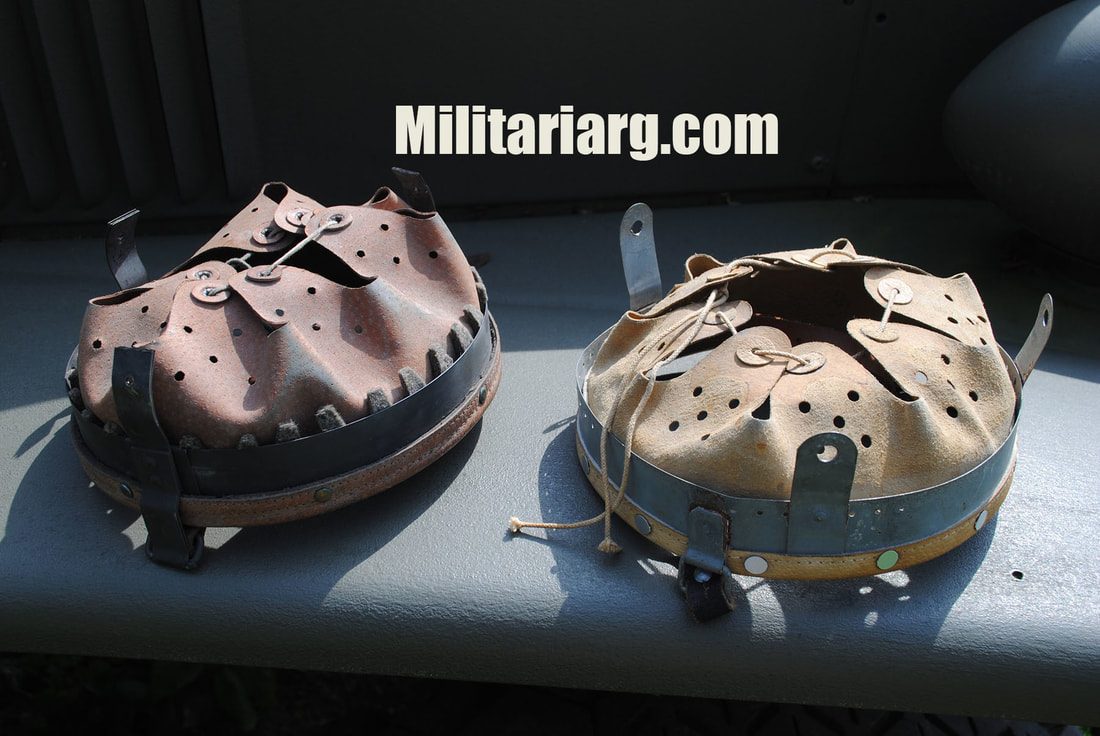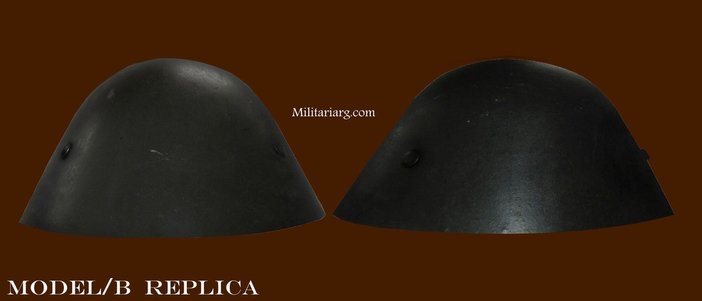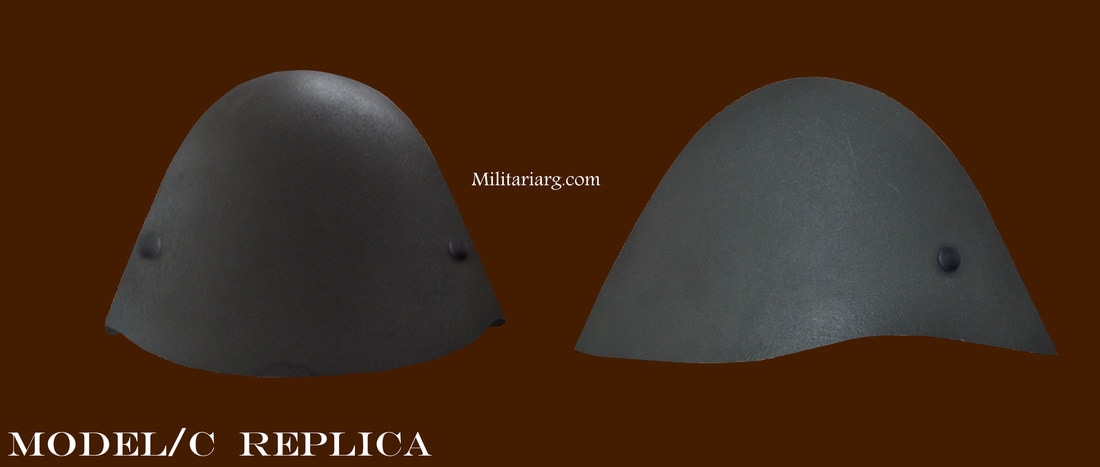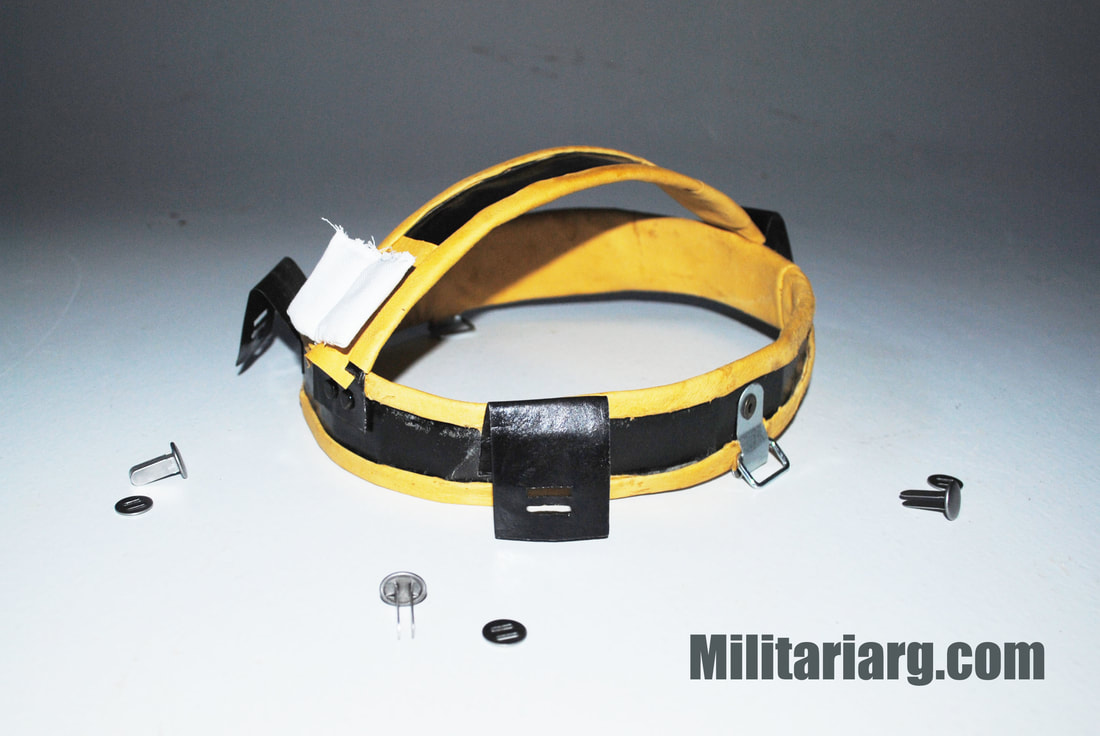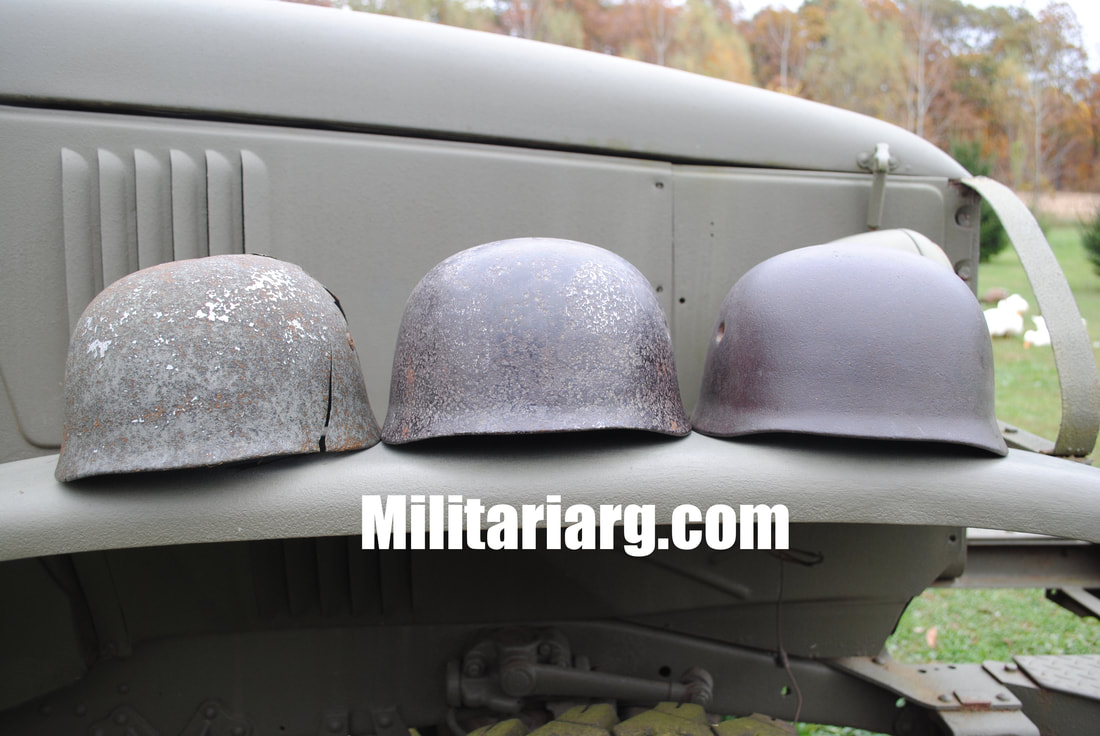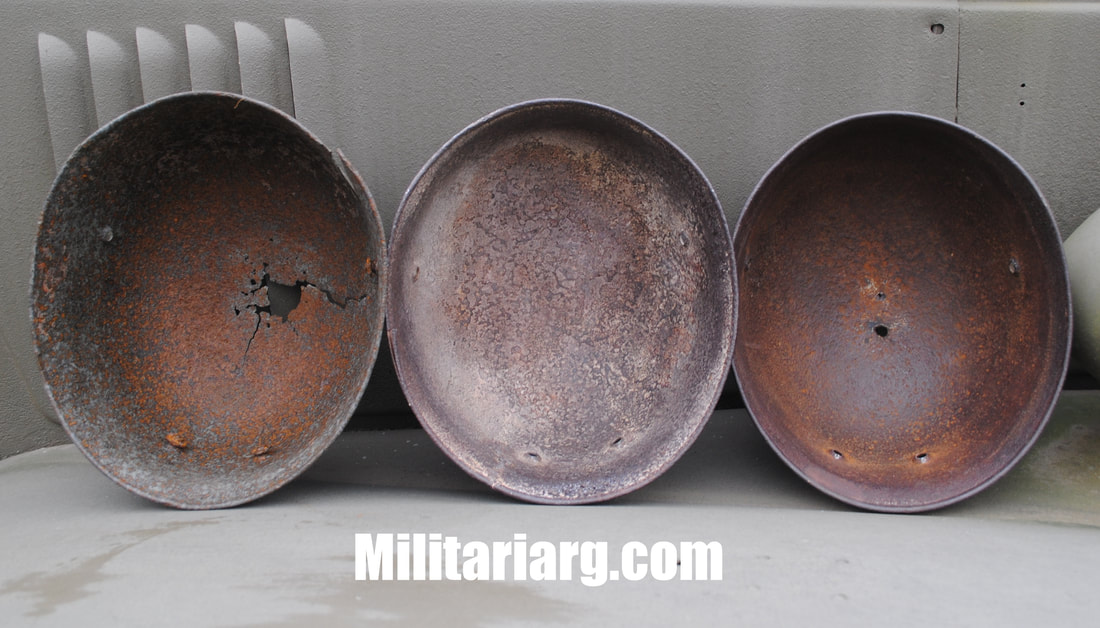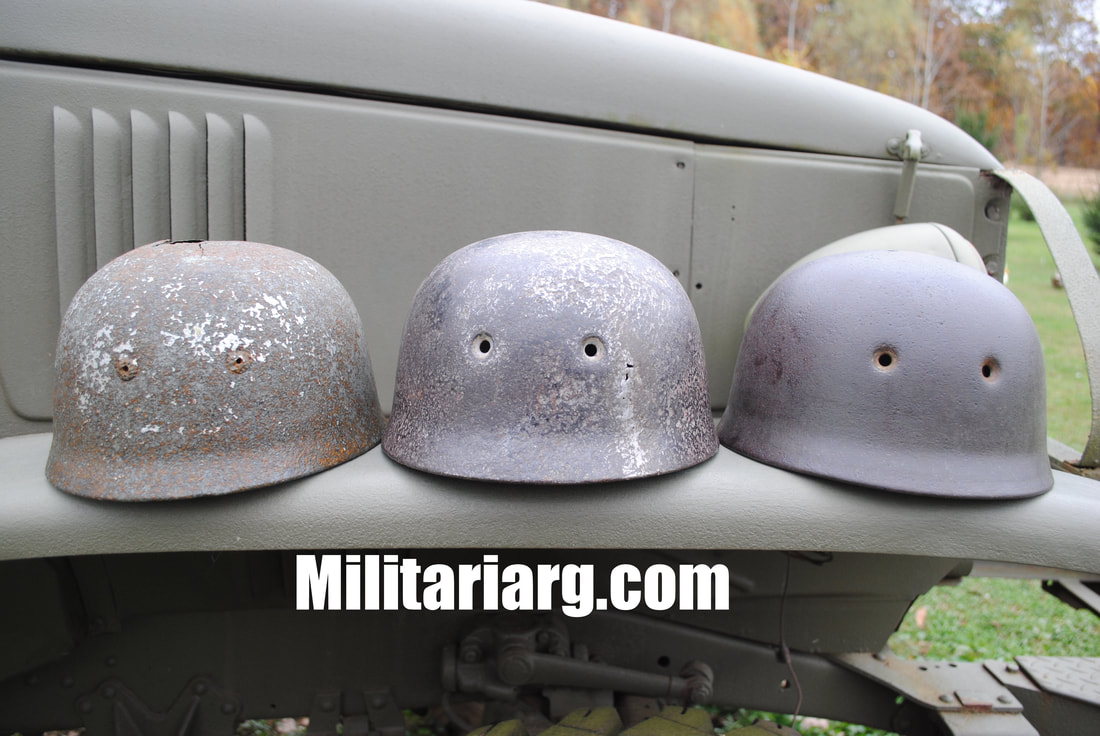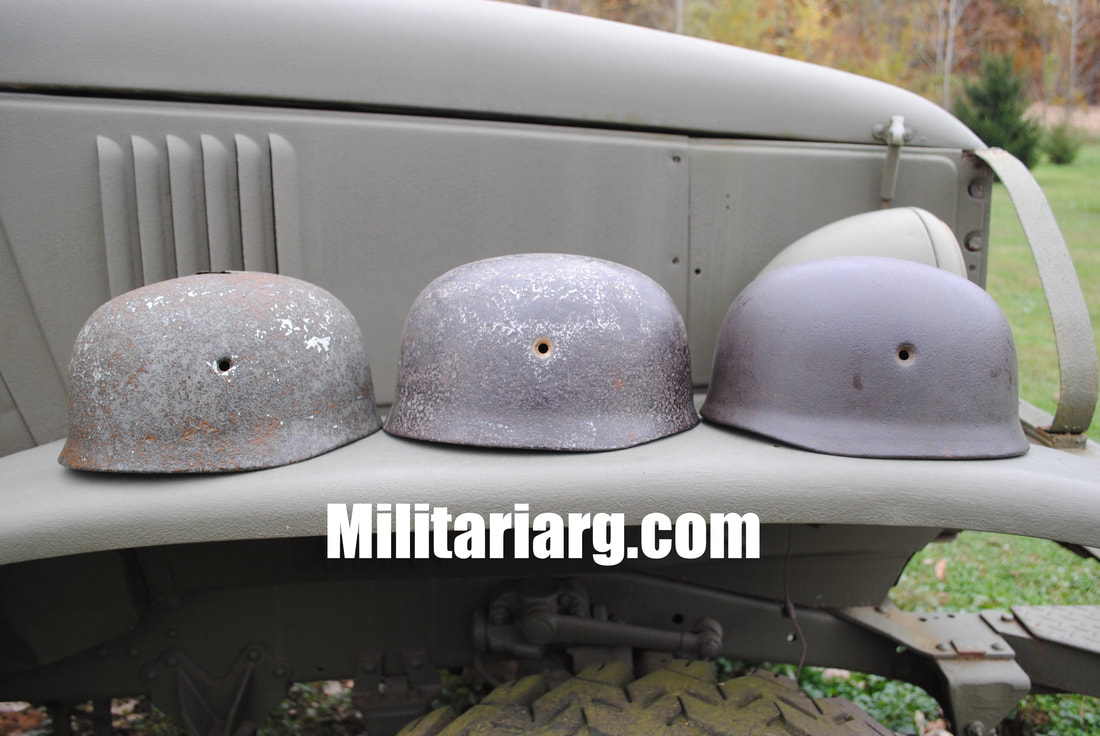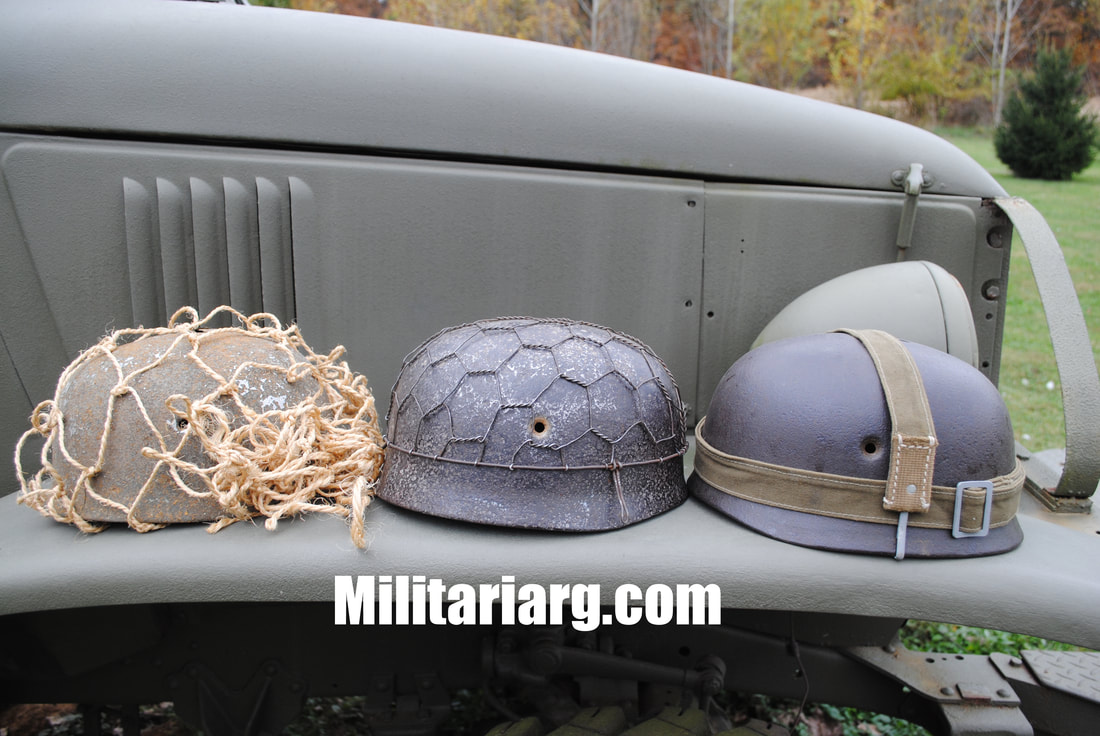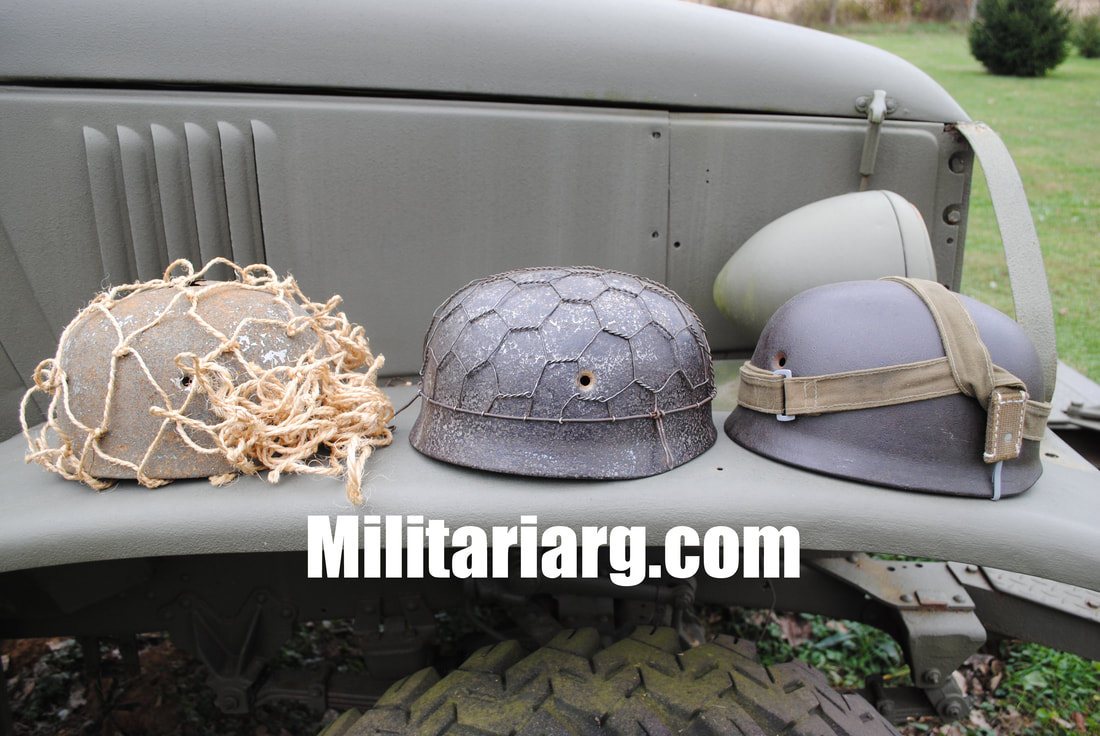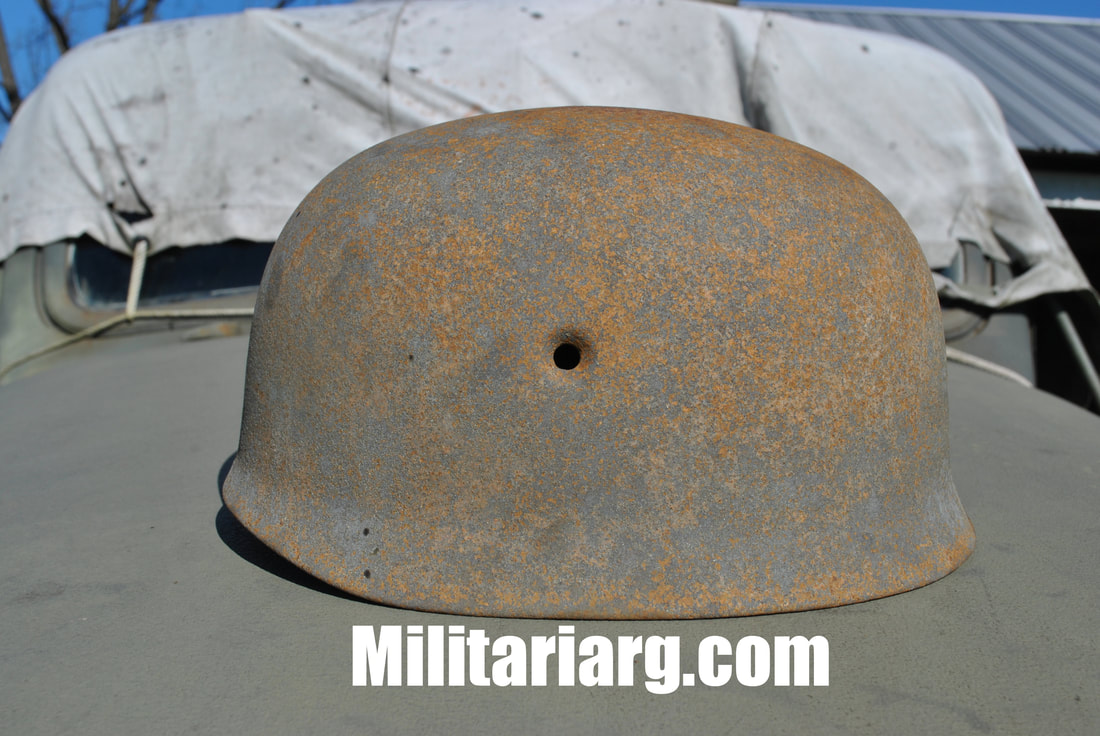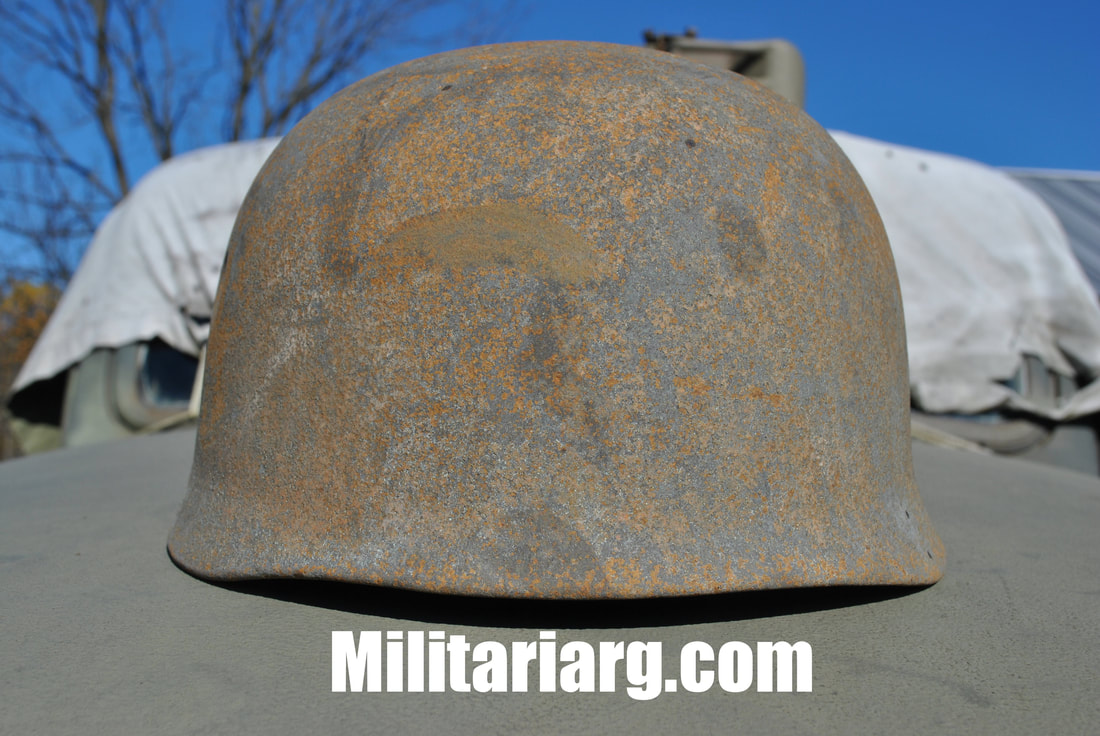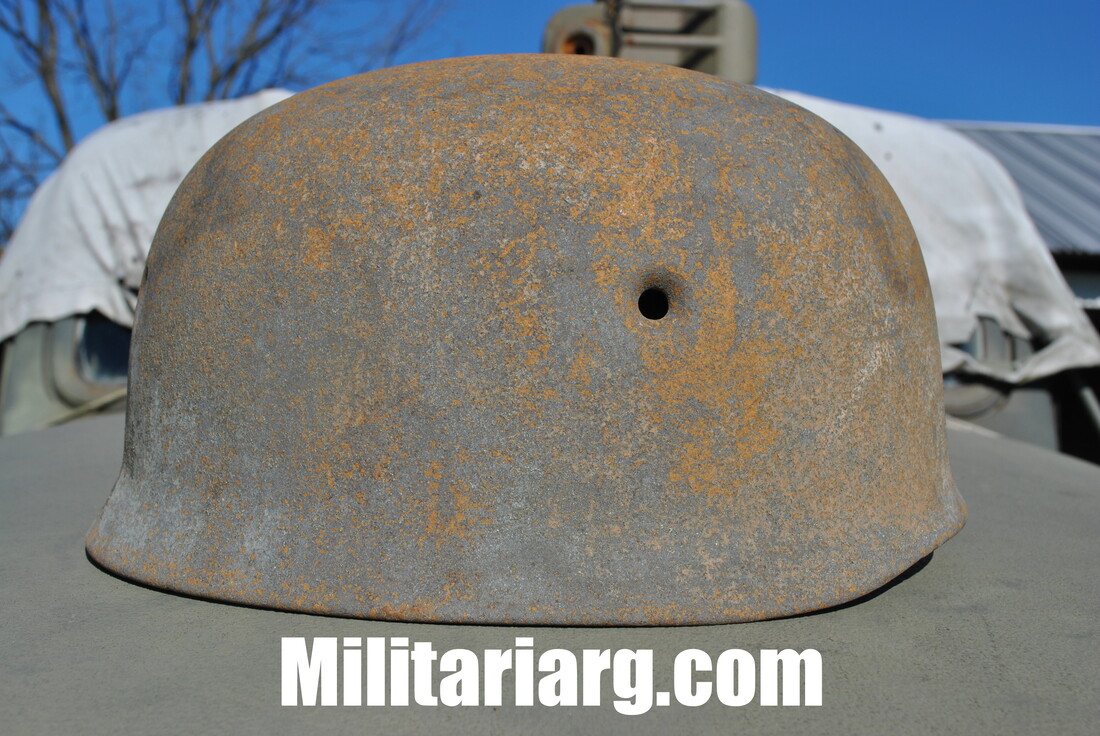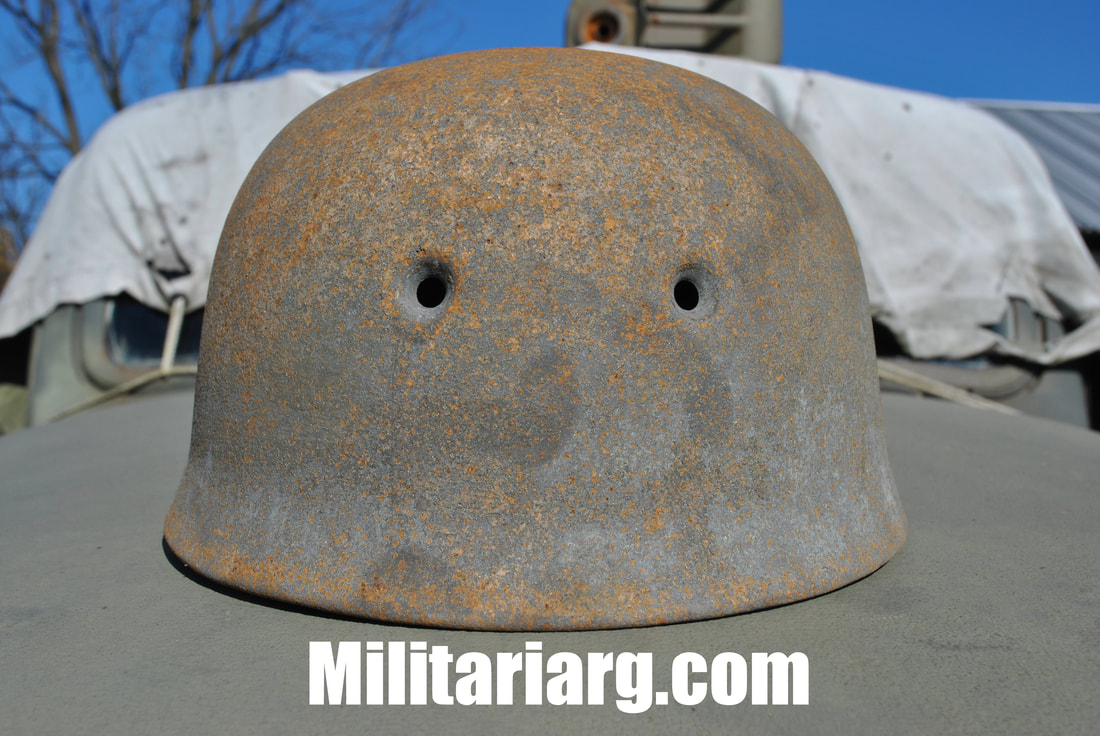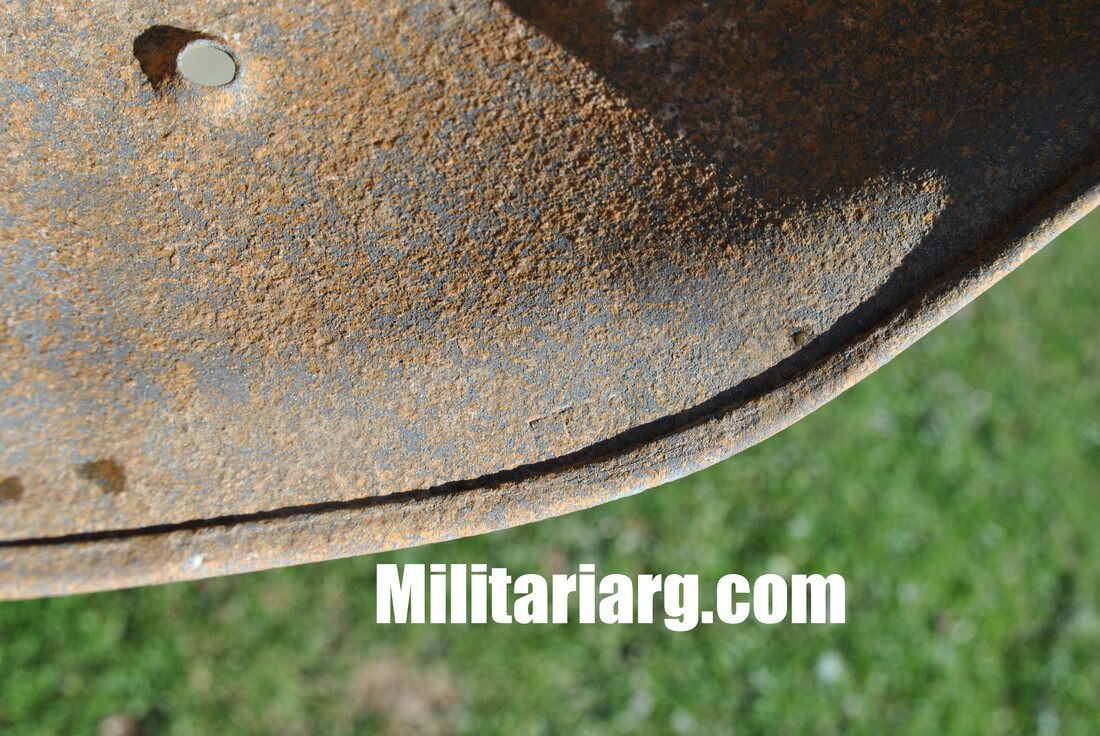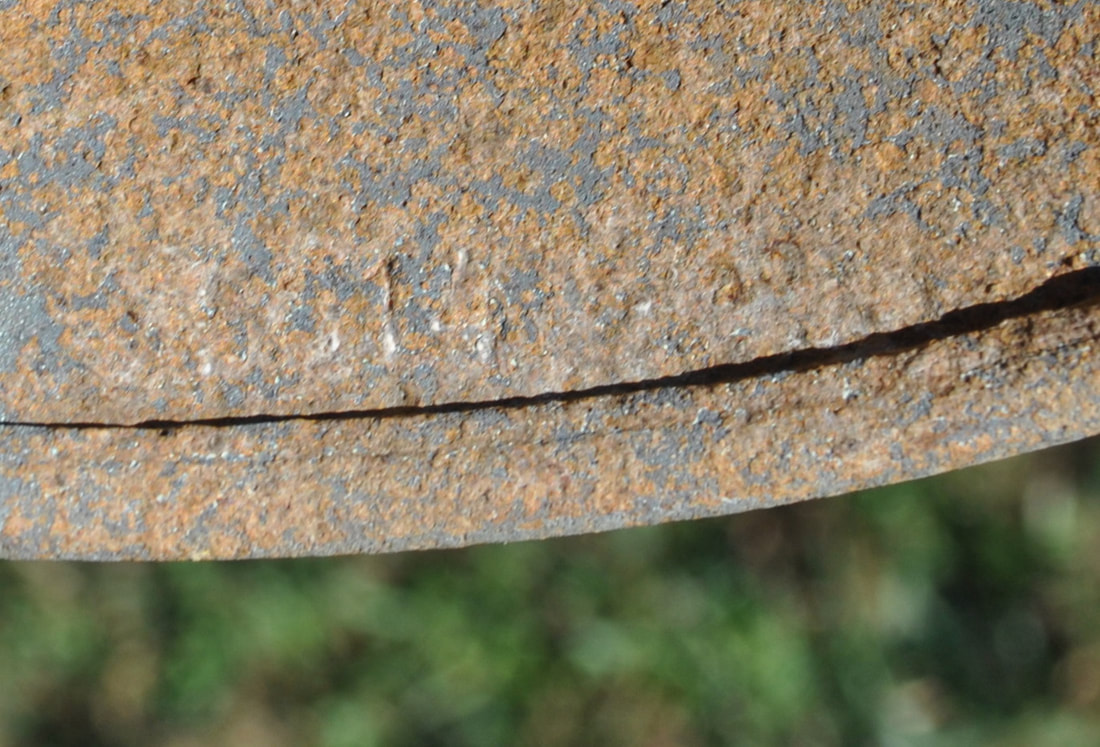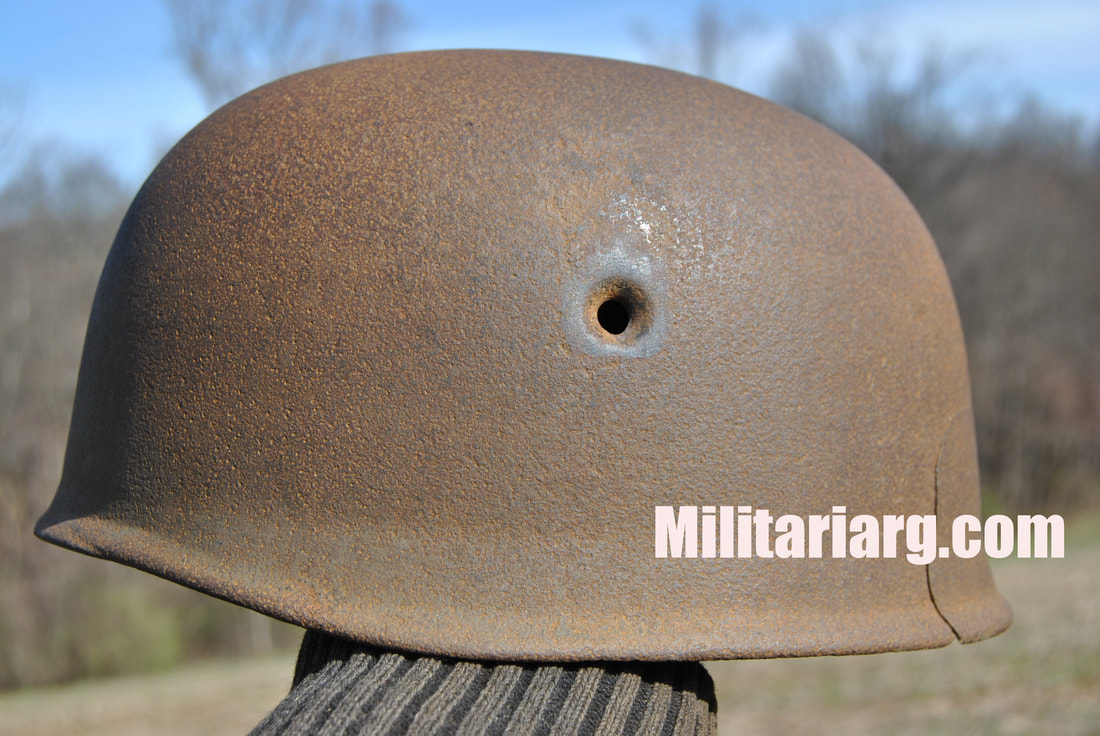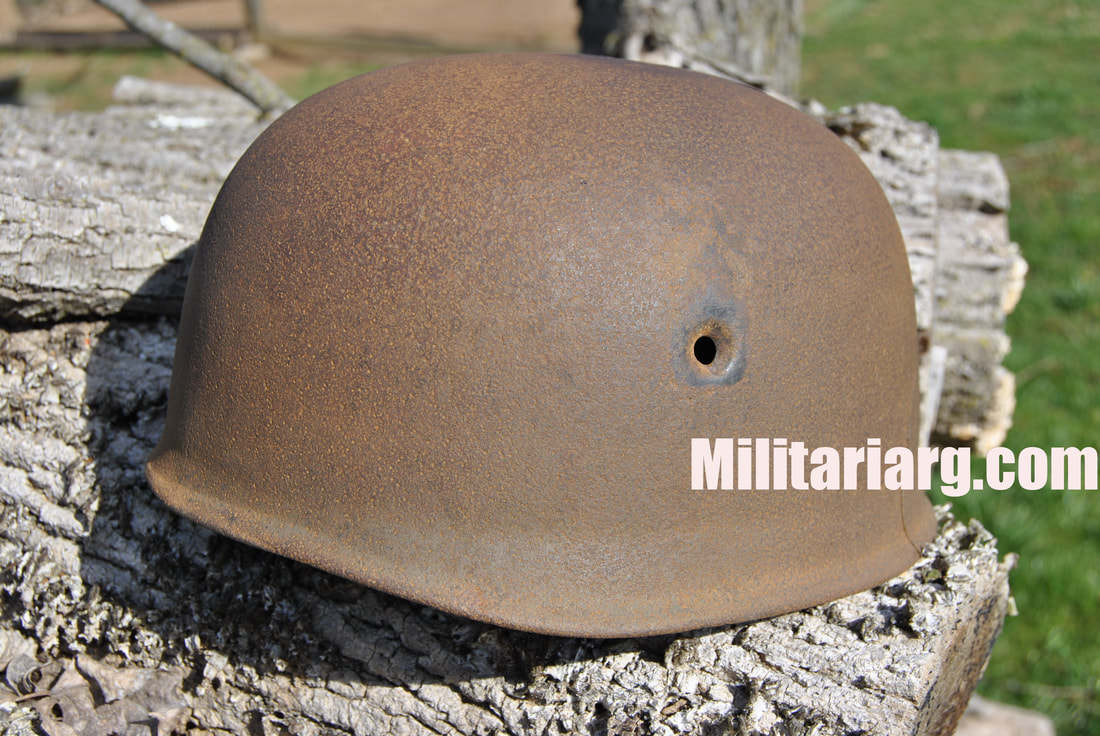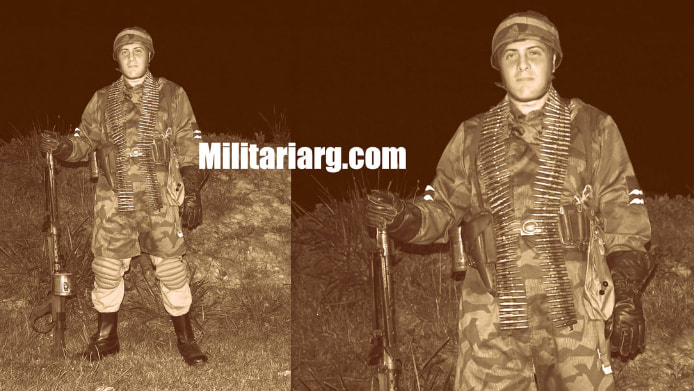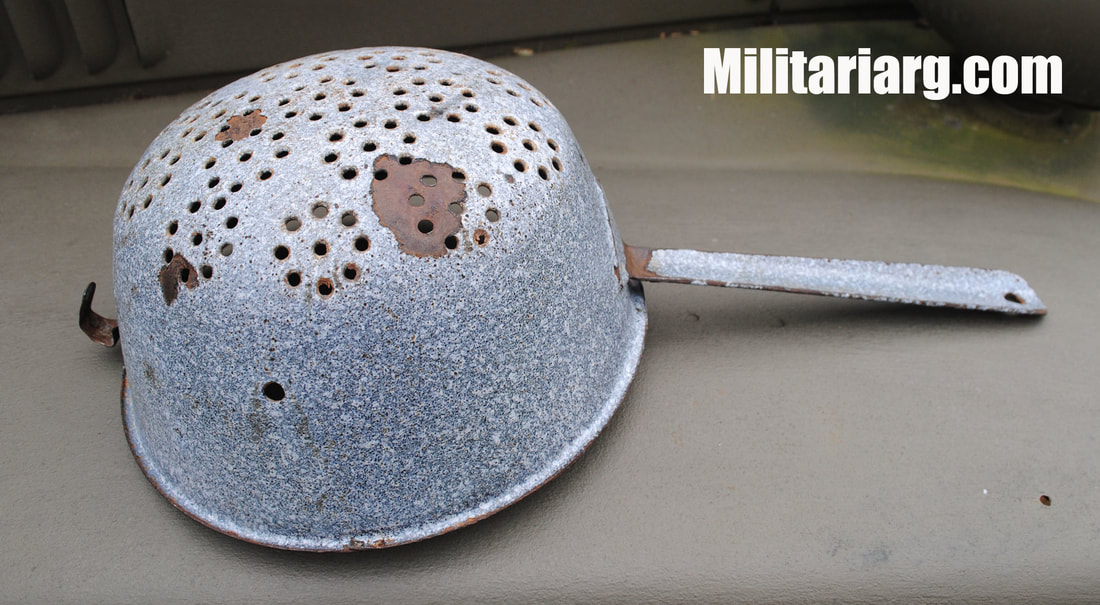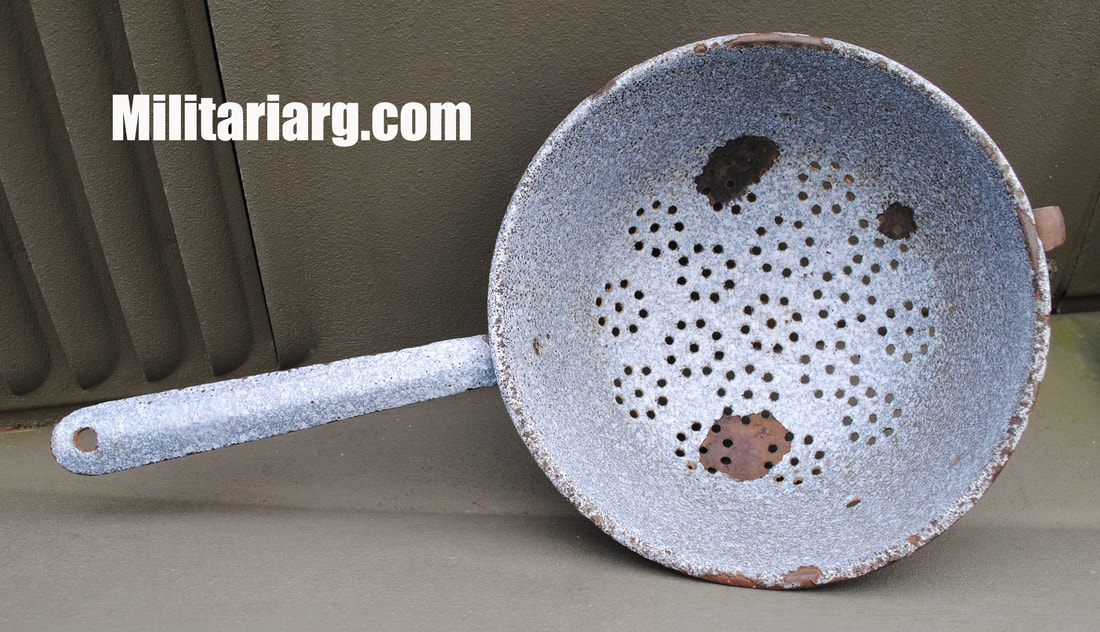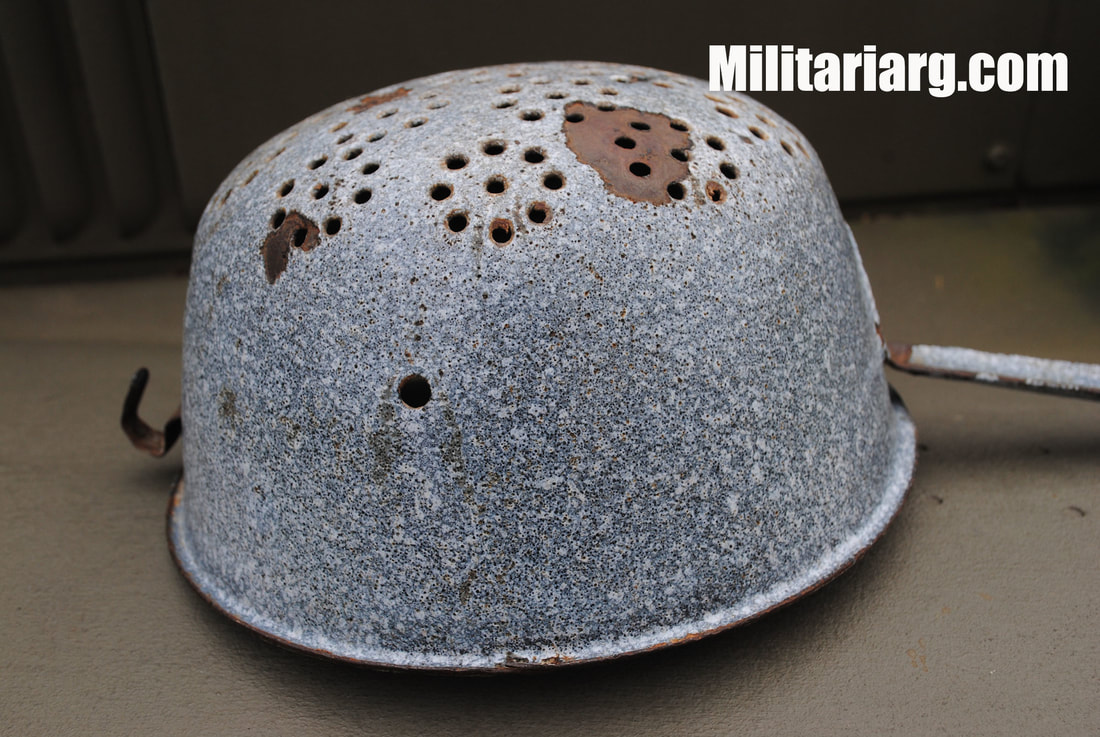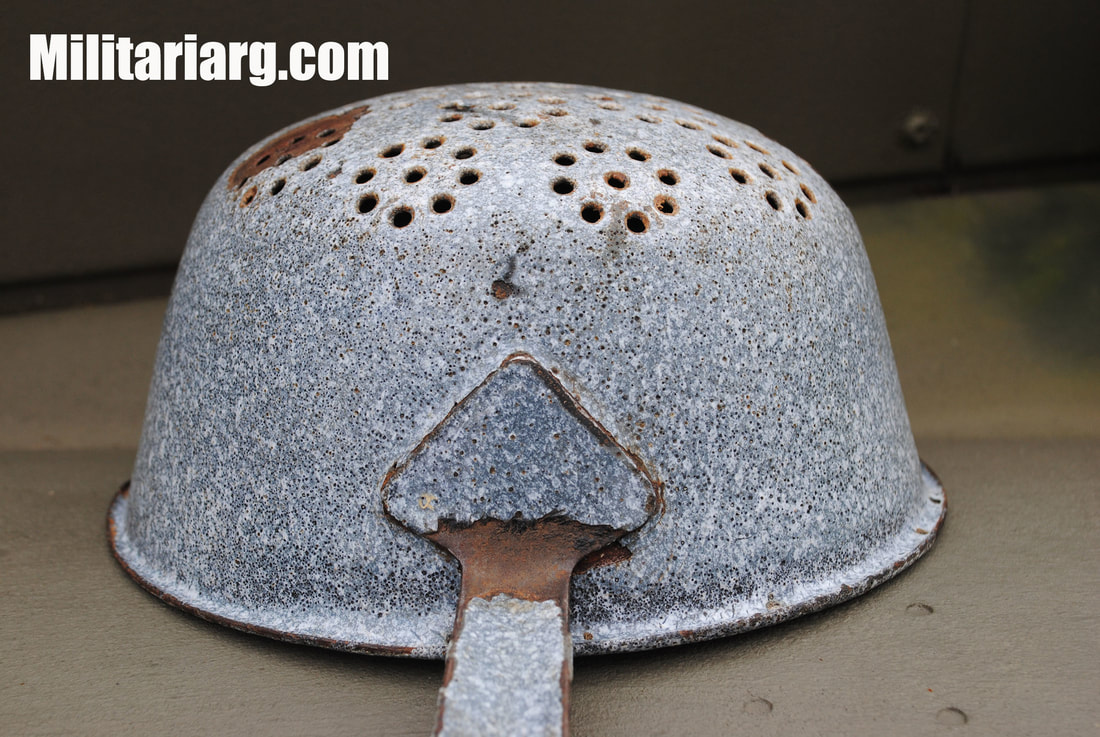Pickelhaube. Prussian Spike Helmet.M1896. WWI Era.
WWI German bullet proof trench shield
WW1 ET64 M18 German Helmet Camo Ear Cut Out (Restored)
WWI M16 German Helmet.
German M18 Helmet, reproduction.
Army Twin Decals Transitional Austrian Helmet. Restored.
Left: M35 field-green color. Semi-relic state. East-Front. Right: M42 Stalhelm with chicken-wire net. Waffens. East Front. Relic State.
M35 (Heer), with apple green or red green color. Semi-relic state.
ET 64 M35 German Helmet Double Decal Luftwaffe.
Left: M31 german aluminum liner. Right: German helmet leather belt, band strap.
M35 German Helmet with Chicken Wire.
M42 w/bread bag strap attached.
ET and cKL German Helmets. Size 64 - 66 - 68.
M38. "Luftschutz, Gladiator Helmet. Civil Defence.
M34 German Helmet. Civil Defence.
Late War German M35 - 40 Beaded Helmet.
WWII, German Gas Mask Cannisters. Marking with a diamond shape with "ESCHEBACH" written 1938 (Eschebach Werke Logo), Frn42 and Eph 43.
ET68 Eisenhuttenwerk Thale Heer Double Decal German Helmet East Front Relic
EF66 Emaillerwerke A.G Fulda M35 DD German Helmet.
Relic M35 DD SE66 Sachsische emailler und stanzwerke A.G. Lauter
M40 Single Decal German Helmet. F.W Esslingen Q64 (Ex-Fire Department).
HKP66 (SE) German Helmet Sächsische emailler und stanzwerke A.G. / Lauter
Post War Finnish Reissued.
M35 German Helmet ET64 (GI Veteran Trophy).
M42 German Helmet, Huge shell size, ckl 68.
Left: M42 German Helmet size 68. Right Relic M40 German Helmet size 62.
Early M35 NS E6, Unrestored German Helmet with new liner and M42 CKL Refurbished. Both shells in size 66.
Qvl66 (Unknown German M42 Helmet Marker)
CKL 66 M42 German Helmet Eisenhüttenwerk Thale / Herz
Original M42 ventless German Helmet.
Original M44 liner system, in a late war M42 ventless. Excellent example. Very rare and hard to find.
Recommended read:The History of the German Steel Helmet by Ludwig Baer.
Late War Replicas of WW2 German Experimental Prototypes.
Replica M44 pattern German helmet liner and late war chinstrap.
RECOMMENDED BOOK: LATE WAR HELMETS OF THE THIRD REICH THALE BRIAN ICE
This photo shows a replica of a German experimental helmet shell from WWII. It is called "Thale" (Factory) Prototype German Helmet. The model "A" was a slightly modified Stahlhelm 35; The model "B/II" was adopted by DDR known as M56 East German Helmet. The shape of the Thale Factory prototype was very close to the Model "B" experimental prototype, but with 3 external rivets, possibly the same system as the early M56 DDR helmet or the Czech M53 helmet.
In the photo above, my interpretation of the Prototype presented by the Thale factory, along with my replica of the export helmet from the DDR. The latter was manufactured in series in the 80s for export to satellite countries or USSR allies. Despite being a modern-produced helmet, there are very few in the militaria market or in the hands of collectors. For this reason I decided to make a replica based on photographs.
The impression that I had of the result, was that its form was within the models used then by the forces of the Warsaw Pact, but without external rivets in the style of the M56 / 66 of the DDR. My replica has rivets soldered inside to hook the standard liner of the M56 (Plastic - Rubber Foam - Leather).
The Thale model, according to the results of the reproduction based on Ludwig Baer's book, approaches the lines of the "B" model. Nevertheless a slight elevation in the front forms a moderate characteristic visor seen in the postwar period in the M54.
In the photo above, to the left is the liner of the Czech model M52, directly based on the German M31 liner. On the right is the liner of an early M56 from the DDR, also based on the German M31 liner. This same liner system could have been similar to what would have been the prototype of the Thale factory.
The photo above is my interpretation of what would have been the prototype "A", according to the description in the book by Ludwig Baer, since unfortunately there are no photographs of the model. According to the book, the model in question would have been a slightly modified M35. This reproduction recreates a shell type M42, but with the sides expanded to further distance the shell walls from the head, thus preventing the impact dents from causing injuries. This space between the head and the shell also facilitates the use of headphones for communication. The helmet has been cut on the sides to improve the auditory properties and thus avoid the distortions of sounds. The cutting of the edges allows improved ventilation, making the aeration vents unnecessary. The cut also facilitates the use of backpacks and equipment in various body positions. The viewfinder has been trimmed allowing the use of optical elements and devices. The result of the expansion of its walls achieved a little more inclination angle suggested in a report by the technicians, to improve the ballistic resistance. However, despite being better recognizable with respect to Allies designs, the modifications made to the prototype "A" were not enough and they succumbed to the other designs B, B2, C and the Thale Prototype. In particular, the model B / II, which was not adopted either, but saw its serial production in the postwar period, under the name M56, in Socialist Germany. The M56 helmet managed to reunite all the objectives raised by the German technicians based on the experiences of the last world war, even with a thickness for greater ballistic resistance, converting it into the best steel helmet of the 20th century.
In this replica, the effect of the expansion of the sides and the shell's cut left a strong resemblance to the postwar model M54 from Socialist Germany. This model probably isn't close, although I think that the slight modification to an M35 shell described in Baer's book could have started from the process of stamping the shell in the factory. Once the shell was expanded, the M31 liner system had to be modified to adapt to a new type of shell (all prototypes), and that was the origin of the new M44 liner system. Cutting of the sides also could have been part of those slight modifications, improving the air circulation inside the helmet.
Photo above, my interpretation of the test liner designed by Dr Hansel, in a replica based on the photos from Baer's book. Picture below, this type of liner next to the liner model 44, used in all protoypes A - B - B2 -C and Thale.
Fallschirmjager German Paratrooper Helmet Shells. ET68 - Relic, Semi Relic Condition:
M38 Fallschirmjager late War Helmet Flared Rim.
Restored and refurbished original WW2 German paratrooper helmet with high-quality M38 liner and helmet cover repro. Fallschirmjager Reenactment.
Post War. Kitchen Strainer made from WW2 German Helmets:
Panzerschiff Admiral Graf Spee Tally Replica.
German Navy, Kaiserliche Marine, Reichmarine or Kriegsmarine.
Admiral Graf Spee ring life preserver (Original). The Admiral Graf Spee was one of the most famous German naval warships of World War II, along with the Bismarck.
